


Catch us on:

The Unedited Session
Salient Podcasts





Salient Podcasts


If the pandemic taught the world anything, it’s that it’s very possible to work and study from home. Lockdowns and online lecturers, for a lot of us, made getting degrees much easier. Society was starting to realise it wouldn’t collapse if someone works from their bedroom, and not from the office, and finally, a 9-5 could be doable.
But unfortunately, the ableism and ignorance so core to people in power has sprinkled its way back in. Te Herenga Waka has provided us a great example of this by robbing its students of university-wide dual delivery. As Teddi mentions in their feature, on page 26, the Disabled Students Association had been urging the university to provide guaranteed dual delivery for years before the pandemic, just for them to give it to us for a measly two years and take it away again.
Salient has covered the lecture recording debate at Law School since our first issue, when the powers that be took away access to lecture recordings on the basis that a butts-on-seats learning model was more effective. It was met with student uproar—not surprising that we didn’t take lightly to the study rights we had earned and grown used to being taken away. An NZ Herald article last week reported that this may be about to change, with a review of the faculty-wide policy.
As a Co-Editor duo made up of a chronically ill gal who did 95% of her degree online, did no readings, and still got As, and a campus addict who loved in-person study and conversation, frothed a good reading about capitalism, and also got As, we both agree this was a fucked decison on the uni’s part. In this boiling climate filled with eight-thousand societal crises, uni should have dual fucking delivery. C’mon John and Nic, it’s the least you can do, you’re already giving us chunky loans a good portion of us will never pay off.
Let’s do an imagination exercise. Us, Maia and Fran, are now the new world leaders of everything. Get ready for this absolute utopia y’all… four day work weeks, three if you’re naaasty. Only one of those days has to be in person, y’know, for your meetings with your cool boss where you just end up eating chips and gossiping the whole time.
It would benefit our democracy and our environment too. If we have a five day work week (that, let’s be honest, spills over into our weekend lol), then all we have energy to do on the weekends is sleep and do laundry. If we have a four day work week, we have extra time to engage in our democracy and decision making, to work in our local gardens, to volunteer and contribute to our community.
Six words: better productivity, better attitudes, less ableism!
In this issue, Cassia ranks where her insulin pump best fits into her outfits, maintaining her fashion-girly aesthetic with disability supports. Jamie talks to Endo Warriors Aotearoa about endometriosis, and the strides we need to back with diagnosis, research, and support for people with endo. Niamh dives into the discrimination against those with disabilities in many countries immigration policies, including Aotearoa. And Teddi looks at what happens when accessibility supports at university fail in subjects like TESOL.
In our news section, it’s green eggs and ham at KJ again. Jamie looks at the impact of cuts on the New Zealand School of Music, Zoë breaks down the Greens’ #LandBack policy, and Ethan looks at the contentions raised over VUWSA’s Study Wage for All campaign. In between all this serious journalism, Maia has a bone to pick with The LAB and their falafel wrap.
Also… have you seen the Barbie movie yet?!?!?
Look after yourself kid, do a face mask, eat a cucumber, and advocate for your rights and your health. We’ve got your back.
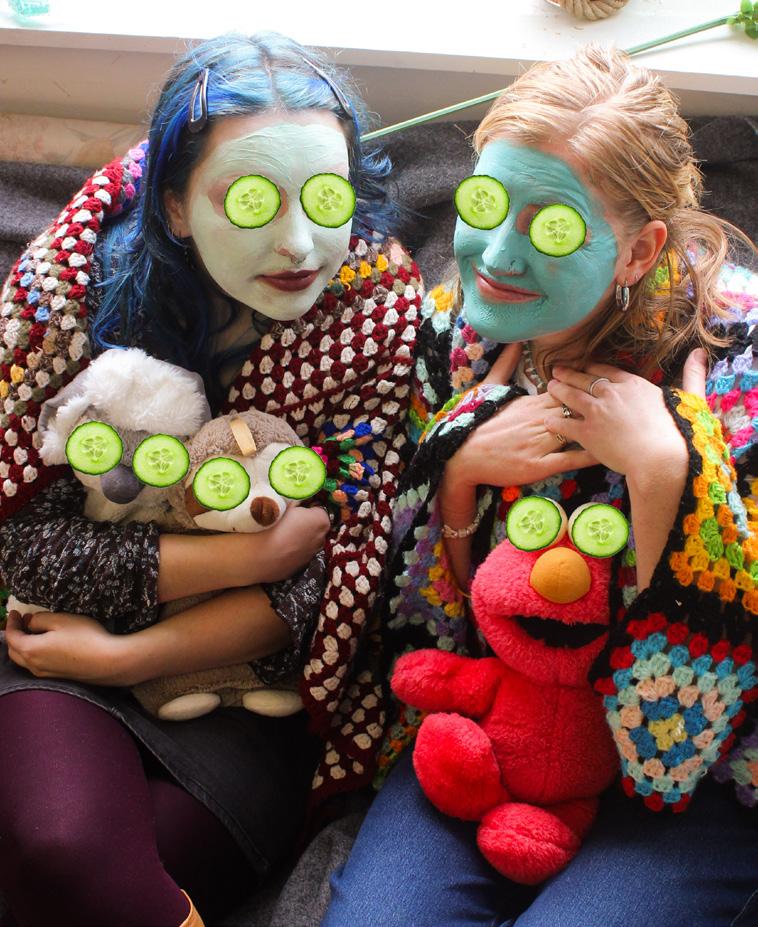 Arohanui, Maia and Fran
Arohanui, Maia and Fran
Salient is fuelled by:


Not at all surprised that once again Māori voices as well as Pacifica have been ignored from this weeks Salient or the Queerlient. This week focuses so much on history overseas and in America while ignoring the history of queer indigenous people right in our own country, I see you’ve made no effort to connect to Takatāpui students. This is a direct reflection of how indigenous communities are often ignored by non Māori and non Pacifica initiatives. You show that we are not a part of the white lgbt community that is so prevalent in Victoria University as a whole. You even acknowledge that the most common image of lgbt people remains white, thin and able bodied but you make no acknowledgement to Takatāpui and LGBT Pacifica as a whole. Not surprised but do better.
-Ezra Jones-MokiThe quality of food in catered halls of residence has once again been called into question after residents were served beef with a green hue and shards of glass.
After a new menu was introduced to appease dissatisfied residents of Katharine Jermyn Hall (KJ), students were reportedly “pretty annoyed” to be served “green beef” on the first night of the new rotation, which was “rough on the inside but [also] quite slimy”. KJ resident Steven said the “bad” flavour “lingered for a long time”.
“Personally I'd describe the food as being shitty. [...] The situation is just deeply unfair to residents,” Steven continued. “I think that it just goes to show how little quality control there is involved in the catering here.”

The green beef debacle prompted the head of the hall to intervene, purchasing a large order of Domino's Pizza to appease disgruntled and hungry residents.
Although the university initially refused to comment on the situation, information released to Salient under the Official Information Act reveals KJ received 14 complaints from residents about the dinner on 30 May and spent a total of $300.73 on pizza.
KJ Hall costs residents a total of $18,278 per year, equating to almost $500 per week. The food woes of the catered hall have been well documented, with the Instagram account @kathyjcuisine posting images of questionable kai since 2018.
The account recently shared images showing broken glass in two residents’ meals alongside the caption “not even a joke, just glass in someone's food” and “how tf does this happen”. Salient reported raw chicken being served, and previous cases detailing everything from maggots, moths, mould, slugs, fish scales, and stray hairs making an appearance in KJ food earlier this year.
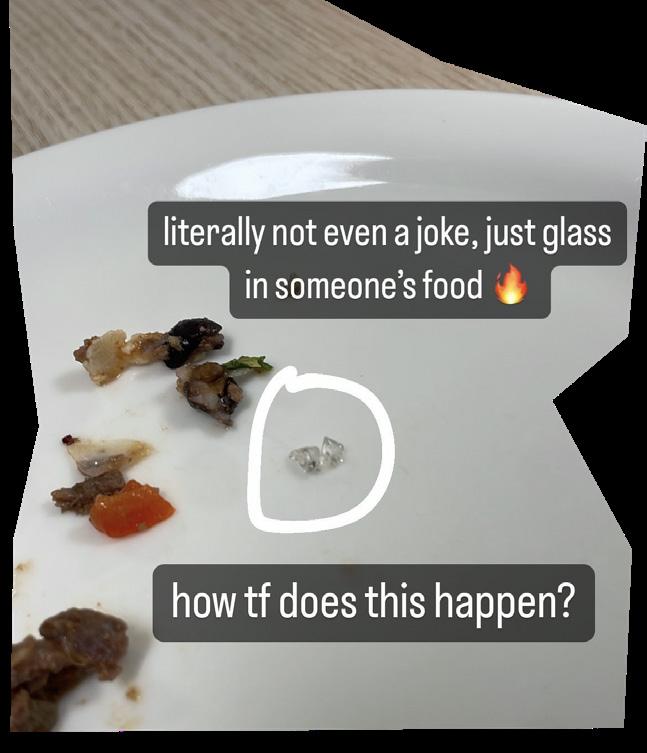
Compass Group, the catering company operating in VUW halls, told Salient that they keep a close eye on the @kathyjcuisine Instagram account, saying, “We are aware of such alleged issues being shared on social media and always investigate these when posted.”
“We apologise for any instances where we have not met students’ expectations and always encourage them to give us direct feedback so that we can improve our offer,” said Simon Lipscombe, Managing Director of Compass Group New Zealand.
The university refused to comment on the situation, but told Salient they are “aware of reports of foreign objects in food circulating on social media, however we have yet to receive a complaint on this through any channels.”
Have you experienced dodgy food in your hall? Send your experience to news@salient.org.nz, and we’ll follow it up for you.
Tucked away at the top of Kelburn Parade, Te Kōkī— the New Zealand School of Music (NZSM) may seem a bit cut off from the rest of the university. That was decidedly not the case on Thursday, 6 July, with over 100 musicians lending their voice or instrument to the Save the NZSM protest concert in the Hub.
According to School of Music Director Sally-Jane Norman, the protest itself was organised by a grassroots group of concerned students and supporters of the faculty who rallied from across Wellington. “All these people just came out of the woodwork, […] it was completely overwhelming and hugely encouraging and inspiring,” Norman said.
The NZSM is facing the university’s reality of a $33 million hole, and like many other departments, is being asked to trim staff. However, the NZSM says the cuts as they have been proposed are asking too much of an already overstretched department.
While the university as a whole has identified a need to cut around 10% of staff, the current proposals have Te Kōkī losing 11 of its 34 full-time staff. The proposed cuts include the loss of nine full-time professors, associate professors, and lecturers, something that faculty members say will cripple the school’s teaching capacities.

“It still feels surreal,” says Shannon Pittaway, lecturer at the NZSM, Principal Bass Trombone of the New Zealand Symphony Orchestra, and one of the organisers of the Save NZSM protest. “The positions that have been targeted are senior positions. This will have a trickle-down effect on everyone. These staff have worked for years at the highest levels of academia and have so much experience that will be lost.”
Shortages of qualified staff Te Kōkī are not new, but the new round of layoffs have renewed fears that the faculty will be pushed well past its breaking point. Staff workloads have steadily increased over the last seven years, with a number of key positions vacated without being filled.
Dr Martin Risely is an associate professor of classical performance, and while already overloaded with excess academic work, he has slotted into the role of the vacant school conductor for the performance students’ opera at the end of this year—an endeavour worth hundreds of work hours. “That's only a part of what I'm doing this Trimester, and it's not even the job I was hired for.”
Especially jarring is the proposed redundancy of both of the faculty’s Musicology academics, erasing the programme from study. Musicology, the study of the history and development of music, is a core subject in tertiary Music education, and its disestablishment would require a complete restructure of Music teaching.
“The NZSM would undoubtedly lose many existing and potential students, who would elect to go to an institution that offers them a more coherent programme.” says Dr Inge van Rij, one of the Musicology academics whose job is under threat. “It should be understood that our cost contribution is actually much more significant than simply the number of Music Studies majors that we attract.”
Norman shared that she has been working closely with senior university staff on modified proposals that could help minimise the impact to teaching and learning at the NZSM. “We do recognise that the university is in a pretty deep hole, and we do have to make [an] effort like everyone else— we’re not going to pretend like we’re in an ivory musical tower.”
While the resounding beats of ‘O Fortuna’ or Aretha Franklin’s ‘Respect’ may have been the loudest part of Thursday’s performance, what was perhaps most impactful was the overwhelming sense of hope that all staff, students and supporters have brought into this fight.
“We’re on a rollercoaster, but both students and staff are being incredibly resilient and appreciably stubborn,” concluded Norman. “We know the last thing to do is to give up.”
The Green Party dropped a major policy announcement last week, Hoki Whenua Mai, aimed at fixing the approach to redress for stolen Māori land.
“The impact of the loss of Māori land, the theft of Māori land, has had intergenerational mamae,” Co-leader Marama Davidson told RNZ. “Hoki Whenua Mai is about restoring wellbeing, restoring equity for whānau Māori, but it's also about justice.”

Hoki Whenua Mai hopes to redress historical land injustices by pursuing multiple measures, including ending perpetual leases and restoring full land rights for original owners (iwi, hapū, and whānau), amending the Public Works Act to prevent future whenua Māori from being taken, and establishing a Commission of Inquiry to investigate the “full extent of land dispossession".
The policy would also reinstate the Waitangi Tribunal's ability to make recommendations in relation to privately owned land,
as well as allowing iwi, hapū, and whānau to progress additional historic claims through the Tribunal. It would abolish the Tribunal’s amended 2008 historic claims deadline.
The party has proposed a $350 million fund to buy back land, although the final cost cannot be confirmed until a full inquiry into the extent of Māori land confiscation has been undertaken—which Davidson confirmed would begin before 2027 if the Greens are elected into the next government.
“Returning land to tangata whenua is the right thing to do to address the ongoing injustices that Māori experience,” the party wrote in an online policy outline.
Prime Minister Chris Hipkins has quickly shut down the proposed policy, saying "we don't intend to re-open Treaty settlements that have been closed where the settlement has been reached. They were full and final settlements."
Last month, VUWSA launched their Study Wage For All campaign, calling on the government to implement a weekly $385 universal student allowance for all those enrolled in tertiary education.
VUWSA’s campaign is being launched with two workshops announced last week, hosted by the Greens’ Wellington Central candidate, Tamatha Paul and current Green MP, Chlöe Swarbrick.
The campaign has sparked controversy for its alignment to the Green Party, whose recent election policy which would see a $385 guaranteed minimum income to everyone in New Zealand, including students.
The calculations for VUWSA’s $385 study wage policy were based on research by the Parliamentary Library, which can only be commissioned by Members of Parliament. Salient understands Chlöe Swarbrick commissioned the research for Green Party policy and has since provided it to VUWSA.
Natalia Albert is the Wellington Central candidate for The Opportunities Party and a current postgraduate student at VUW. She told Salient it’s unfair for VUWSA to be “campaigning with the Greens”.
Albert said she's written to VUWSA president Jessica Ye, calling for her to put a halt to the workshops with Swarbrick and Paul, and to make an official statement about the neutrality of VUWSA and the student wage campaign.
“It lands like a pile of shit, especially when they're claiming political neutrality,” Albert said.
“Institutions play a huge role in fueling or diffusing polarisation. One way to avoid them fueling it this election is by demanding that they run a fair and transparent process.”
“If you're going to be politically neutral you can't do [the workshops] with just one party, you either give every party the opportunity or you don’t campaign with the Greens,” she said.
Ye defended the campaign, saying that although VUWSA is non-partisan, that doesn't mean they are politically neutral—rather, they are politically active.
“A universal student allowance is something that [VUWSA] has campaigned on literally since the 1990s,” Ye said.
Ye argues that because Paul is a former VUWSA President, and Swarbrick has long been advocating for universal student allowance, it makes sense for them to host the workshops.

“Whilst Chlöe and Tamatha are [hosting the workshops], they are not there in a capacity where we are publicly endorsing them. They're there because they support this specific kaupapa.”
Ye said that, at this stage, VUWSA have no intention of postponing the workshops, but have put out a public statement addressing Albert’s concerns.
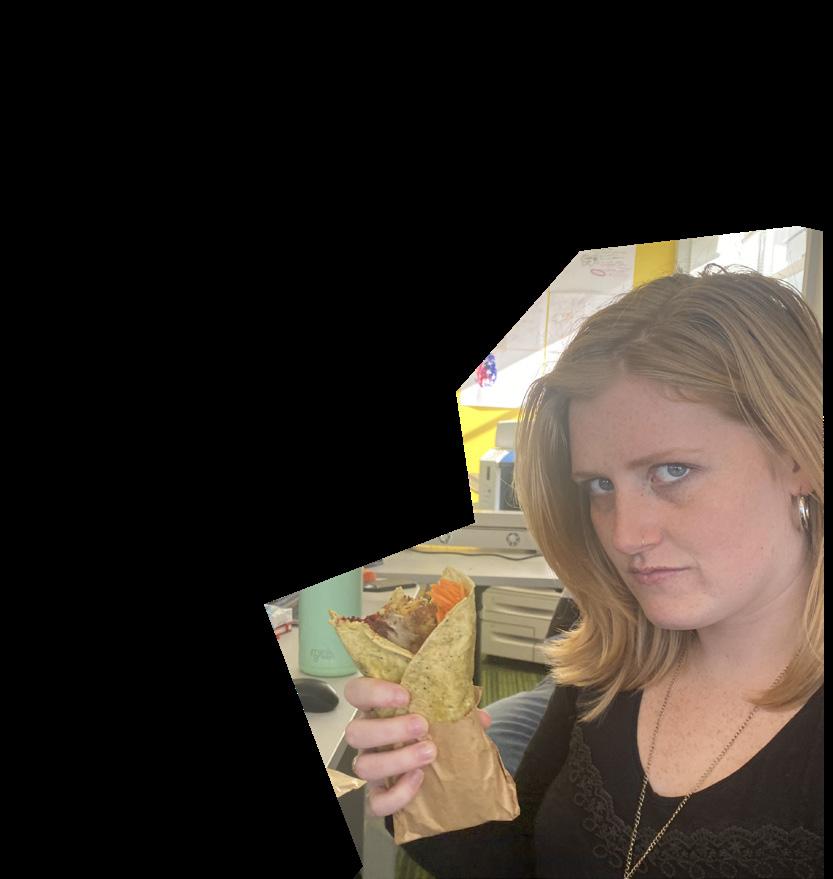




 Words by Maia Ingoe (she/her)
Words by Maia Ingoe (she/her)
The LAB’s halloumi wrap was, on some days, the only reason I came to uni. I dragged myself to 9 a.m. lectures, knowing that since my disorganised ass hadn’t made lunch, my beloved halloumi wrap awaited me. At $10, it was a spicy price, but I was willing to pay for the mental, emotional, spiritual, and physical support the halloumi wrap gave me. One bite into that delicious, salted, cheesy goodness mixed in with seasonal vegetables, beans, and that beautiful aioli sauce, and I was insatiable.
Imagine my reaction when, heading to buy my favourite emotional support little lunchtime treat, I saw my dearest halloumi wrap was replaced with FALAFEL. The poor vegetarians’ lunchtime protein. I was outraged. Scandalised, if you will. I lost sleep over it. What had caused The LAB to cheat out on their premier wraps with falafel?
The Kelburn LAB general manager, Mamani, said they “seasonally change their ingredients”, but that ultimately, their food is delivered pre-made from the kitchen. I felt squandered in my quest for halloumi justice.
While The LAB might argue this is simply a seasonal change, I suspect something sinister is afoot. This seems to me a costsaving, taste-sacrificing change, without reduction of the $10 price—scraping out more for less from students’ pockets.
Two-hundred grams of Mainland halloumi cheese from Countdown is $7.50, while 400g of Lisa’s falafel mix from Countdown is $6.10.
I did try the dreaded falafel wrap in the interests of balanced journalism. I found a disgruntled, grainy taste, nothing like the filling, salty, cheesy deliciousness that provided respite to my study woes. I could not justify this change by taste.
The price difference, however, is staggering. Clearly, The LAB is trying to rob me of my joy and my money. I took to Instagram, asking Salient’s followers if they too had been personally affected by the removal of the halloumi wrap from The LAB’s shelves. I was humbled: 74% of respondents said, “idc, the lab is too expensive anyway”.
Thankfully, only 3% said that falafel is better. If that was you, I now have a personal grievance with you. Meet me in the carpark at midnight—the supreme lunchtime ruler, halloumi or falafel, wins.
Eva
Reuben (he/him)

Zia (he/they)
Like any self respecting lesbian, I put Barbie first.

What will you be watching first, and why: or
Barbie, but I think Openheimer is gonna be better.
Barbie, because I want to pirate Oppenheimer. Christopher Nolan is worthy of pirating.
Do both. Same day. Start with Barbie to have a nice fun start to the day. Then go to JJ's, have a few pints, then go Oppenhiemer, sober it up a bit.Amelia (she/they)
The first trailer for Wonka recently dropped online and it has split the internet over Timothée Chalamet’s performance as the titular chocolatier. Directed by Paul King of Paddington fame, the film is a prequel to Charlie and the Chocolate Factory, though it is yet unclear where Timmy Wonka fits into the wider Wonka-verse. Is he a younger version of Gene Wilder’s goofy 1971 Wonka, or Johnny Depp’s more sinister 2001 portrayal? Who knows. As a result, debate has ensued online about whether Chalamet is whimsical enough for the role, or if his aloof performance combined with his twinky mystique fails to portray Wonka for the madman that he is. He is joined by a star studded cast, including Olivia Colman, Rowan Atkinson, and Hugh Grant, who appears as everyone’s favourite allegory for chattel slavery: the Oompa Loompa. The film will hit cinemas on 15 December.
In case you somehow haven’t heard, Thursday last week marked the release of one of the year’s most highly anticipated films: Barbie, directed by Greta Gerwig. Its promotional campaign has made this news pretty hard to miss, with billboards going up around town, buses in Auckland going viral for their Barbie decals, and the global press tour colouring cities around the world pink. Barbie fans streamed into Wellington’s cinemas to tune into the [???] experience, and were [???] by Margot Robbie’s [???] performance as Barbie. Ryan Gosling’s Ken was a [???] for viewers, who were treated to his existential and haunting ballad ‘I’m Just Ken’, in which he [???]. Tickets for screenings remain scarce in most cinemas. Greta Gerwig is a certified genius.
*This was written prior to the release of Barbie, so fill in the blanks.
Countdown is set to turn back the clocks this summer— but not on their prices. The supermarkets are set to rebrand back to Woolworths, a name that hasn’t been seen in Aotearoa since 2011. Countdown’s parent company, supermarket giant the Woolworths Group, said the rebrand of all 194 of its Aotearoa stores would cost more than $400 million over the next three years. It comes after scrutiny over Countdown’s role in supermarket duopoly, with a Commerce Commission recent market study finding the giants make over $480 million a year in excess profits. Meanwhile, students continue to struggle to afford the cost of cheese thanks to cozzy livs.
Hallelujah! The National Party have flown to the aid of students’ rental woes, with a new, no-evidence based policy that will allow people under 30 to dip into their KiwiSaver funds for rental bond money. The scheme would be capped at five years, and the money has to be either returned to KiwiSaver or passed onto a new property bond. “This is a common sense change that will make it easier for people to pay for bonds, and free up cash for young people. Young people have told me they’d like to have the option of using their KiwiSaver savings to sort their bond payments, and that this policy will make a difference,” said the National Party’s Finance spokesperson, Chris Bishop. Because what students really want is to borrow from their own meagre savings to pay for living costs. The policy has been met with criticism by many, including the Green Party. Tertiary Education spokesperson Chlöe Swarbick said it has the potential to drive up the cost of rental prices.
Words by Wes Brooke-White (he/him)

This debut feature from Charlotte Wells is a triumph of feeling—as visually rich as it is emotionally complex. Child actor Frankie Corio is revelatory as Sophie, and is more than a match for Paul Mescal’s sweetness and wounded masculinity as her dad Callum. It’s a film about fathers and daughters, and the gulf of memory and experience which separates them. We watch Sophie and Callum’s nuanced relationship at the dreamy, formal distance of someone looking back on a childhood photo. Sophie is as inaccessible to Callum as his younger self. Callum’s inner life, meanwhile, is beyond Sophie’s understanding. Only in retrospect do either of them have the chance to fill in the missing pieces. It’s difficult to describe the full-body experience that Aftersun entails—the burn of it—because it doesn’t feel real once it’s passed through you. As a sketch of cinema’s power to access the past, it’s inexplicable and essential. You can find it on Google Play, Apple TV, Microsoft, or Neon.
Enys Men is haunted. It’s a creepy-cosy chiller from Bait director Mark Jenkin, one of the most exciting British filmmakers of our time, using its rhythms to build something uniquely terrifying. The film, shot without sound and on lush, vibrant 16mm stock, feels like a found object from a different world. Enys Men draws heft and texture from its analog sense of place. Structurally, it’s tied to the everyday procedures of a wildlife volunteer observing a flower and taking simple notes. The rituals are almost disarming, until Jenkin turns them against you. If you have the patience for it, Enys Men is as rewarding a horror experience as I’ve had in years. I’m hoping for an NZ streaming release, but until then, you’ll have to get creative.

John Wick: Chapter 4 is a non-stop Greatest Hits mixtape of the action canon. Not much of it is novel, but its strength is in how precisely Stahelski and his team arrange the building blocks of familiar iconography. The things we’ve seen done before have never been done better. It’s a brutal collage of old-school physical comedy, martial arts, tactical gunplay, car chases, Westerns, and video games, all captured in delirious colour and light. After an early setpiece where archers fight a demonic SWAT team, the movie never hits pause. Every sequence is made up of a dozen moving parts, all interlocking in perfect, ergonomic zen. The film is badly written (which is good), incomprehensible (which doesn’t matter), and lacks nuance (who cares). If you’ve ever enjoyed an action film, you’ll love this glorious celebration of movement, physicality, and getting kicked down stairs. Rent it from the usual suspects.

Matt Johnson made a name for himself with his anarchic webseries Nirvana the Band the Show, but his three feature films have skewed darker. BlackBerry, about the smartphone of the same name, sees Johnson take the corporate docudrama formula (think Air or The Social Network) and place it somewhere completely new—more specifically, Canada. We’re miles away from operatic Silicon Valley psychodrama, following pathetic characters in dorky offices selling their souls for a doomed product. BlackBerry goes through the motions of a rags-toriches story, but as an audience, we know from scene one that the BlackBerry doesn’t end up like Facebook. This is the story of a failure and Johnson uses our foreknowledge of that fact to rob these free-market fantasies of their power. As a director known for gleefully pushing the bounds of corporate copyright, he doesn’t want us cheering for the brand. This is a pitch-black comedy about the joys of the creative process and how capitalism conspires to suck them dry. Until it’s available to stream, ask your CompSci flatmate to burn you a copy.
The colours and compositions of Rye Lane put everything else happening in modern rom coms to shame. Dom and Yas have the chemistry these films live or die on, and they have it in spades. Their day-long meet cute takes them across South London as they confront each other’s pasts and decide what they want from their futures. The dialogue is whip-smart and the cinematography is playful. This film pays respect to a lineage of British screen romance, from Richard Curtis films like Love Actually to successors like this year’s What’s Love Got to Do With It. But it dumps the nauseatingly upper-class blandness of those movies for something living and breathing. Curtis’ films are about romantic grand gestures, and while Rye Lane has its share of those, it’s got much more to say about the smaller and more deeply-felt rhythms of getting to know another person. It’s available on Disney Plus.

If you’ve seen Joel Haver’s name before, it was probably underneath one of a hundred short form comedy videos you’ve scrolled past in your YouTube recommendations this week. He’s at the centre of one of the platform’s best-kept secrets: the ‘folk filmmaking’ movement. That is, a loose group of creators who make feature-length movies with no budget and post them for free. Haver’s films are defined by a sense of community and improvisation. Things Could Always Be Worse is a collaboration with his friend Trent, shot entirely during the 2023 Oscars. The movie follows Joel and Trent (as lightly fictionalised versions of themselves) getting trapped in Joel’s bedroom over a long weekend. It’s a tense premise, but the big joke of the whole thing is how relaxed it feels. You spend time with these guys, getting a sense of who they are and why they’re friends. It’s a breezy, funny little picture and a reminder that you don’t need permission to make things with the people you love. Find it on YouTube for zero dollars.
These past 12-ish years, alt comedy legends Tim Heidecker and Gregg Turkington have been busy making On Cinema. It’s a multimedia performance art project, a soap opera, a satire of lazy internet criticism, and a study of two broken men who ruin everything. It’s the funniest thing I’ve ever seen online. Each year they pull out all the stops for a special Oscar night broadcast with special guests and shocking twists. Consider this your invitation to start exploring the On Cinema mythos—from episode one, or, if you’re all about jumping in the deep end, from this 10th anniversary spectacular. On Cinema’s greatest strength is also its biggest weakness. Individually, the pieces are good, not great, but they achieve greatness by rewiring your brain as you dive deeper. You might love it, you might hate it, but I guarantee it’s the most fun you’ll ever have watching a grown man weep while dressed as Pinnocchio.
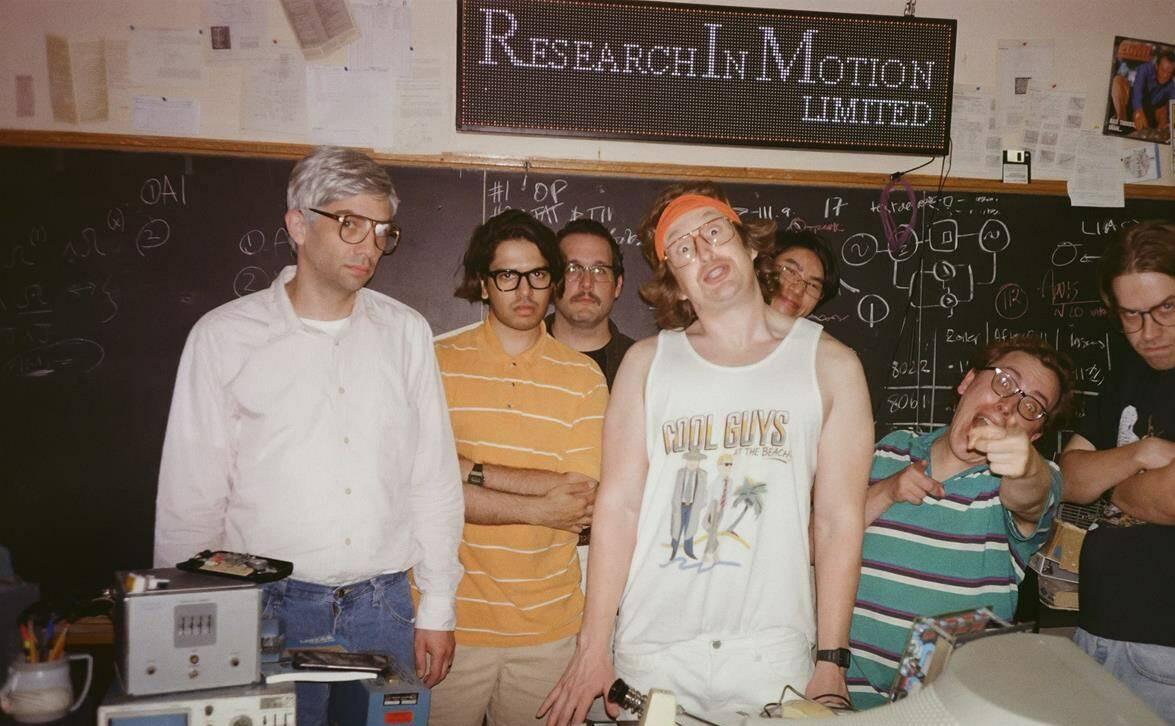
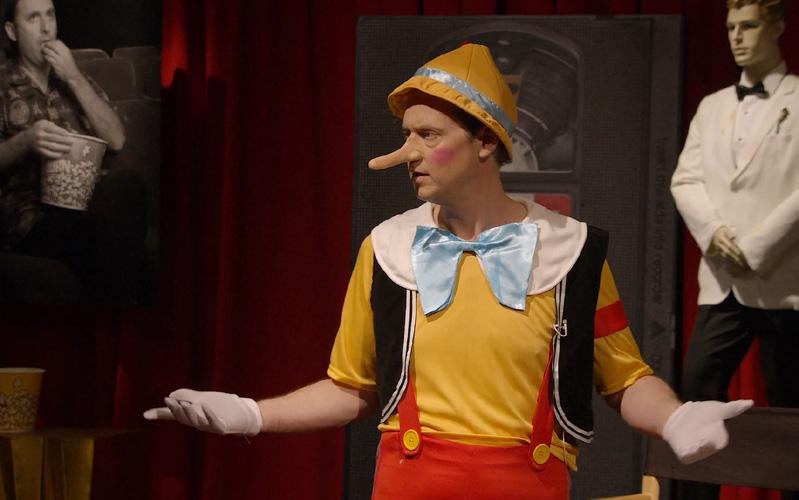
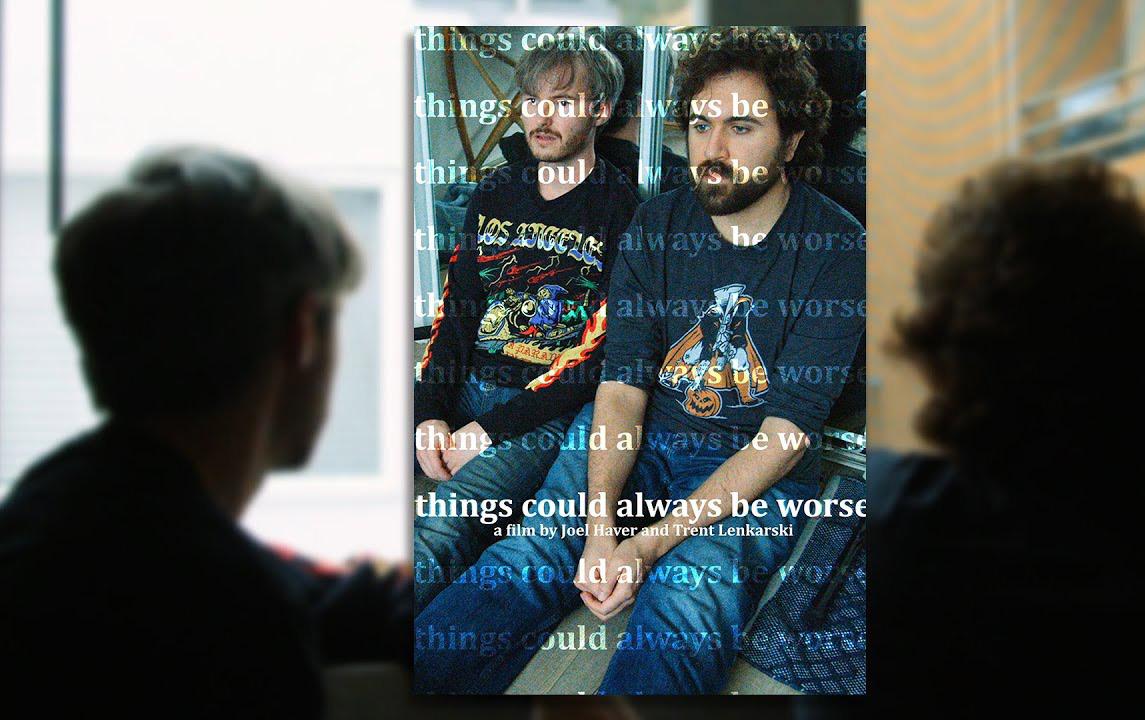
“Single-use period products are made with plastic, meaning they can take up to 500 years to break down in our landfills. Switch[ing] to period underwear continues to significantly reduce the number of single-use pads and tampons ending up in landfill and waterways.”
- Lena Aziz, AWWA RepresentativeMy mum bought me my first pair of period underwear in my last year of high school. They were from the American-owned brand Thinx. When I left home a couple months later, I had misplaced them. Back in 2018, there weren’t any local options that I knew of, and I didn’t have the disposable income to get more pairs of Thinx shipped to my hall bedroom.
I tried a moon cup for a while, wanting to stay on that saving the planet grind. But on every attempt, it popped inside of me like one of those half-circle popper dropper toys from the early 2000s—a sensation I don’t recommend. So I went back to a heavy period’s not-so-sustainable best friend: nighttime maxi pads.
As much as I have enjoyed the arrivaly of period underwear from brands such as Libra and U by Kotex on supermarket shelves in the last year or so, I’m looking for a smidgen more out of my period products. I want something comfy, cute, and made to last. I want to support an ethical brand, so plastic, ancient, femmecoded period product brands are really not the go.
If I had to choose U by Kotex or Libra though, I’d go for U by Kotex just because they paired up with Thinx to make theirs. Libra has also had numerous transphobic complaints in the past and their period underwear is very much giving pink tax girly (with lace waistbands and their teen line being called ‘Libra Girl’) so not overly inviting or inclusive vibes.
For this review, I’m focusing on the Aotearoa-made, wahine Māori-owned period underwear brand: AWWA. (I was gifted AWWA products for this review.) I first noticed AWWA a
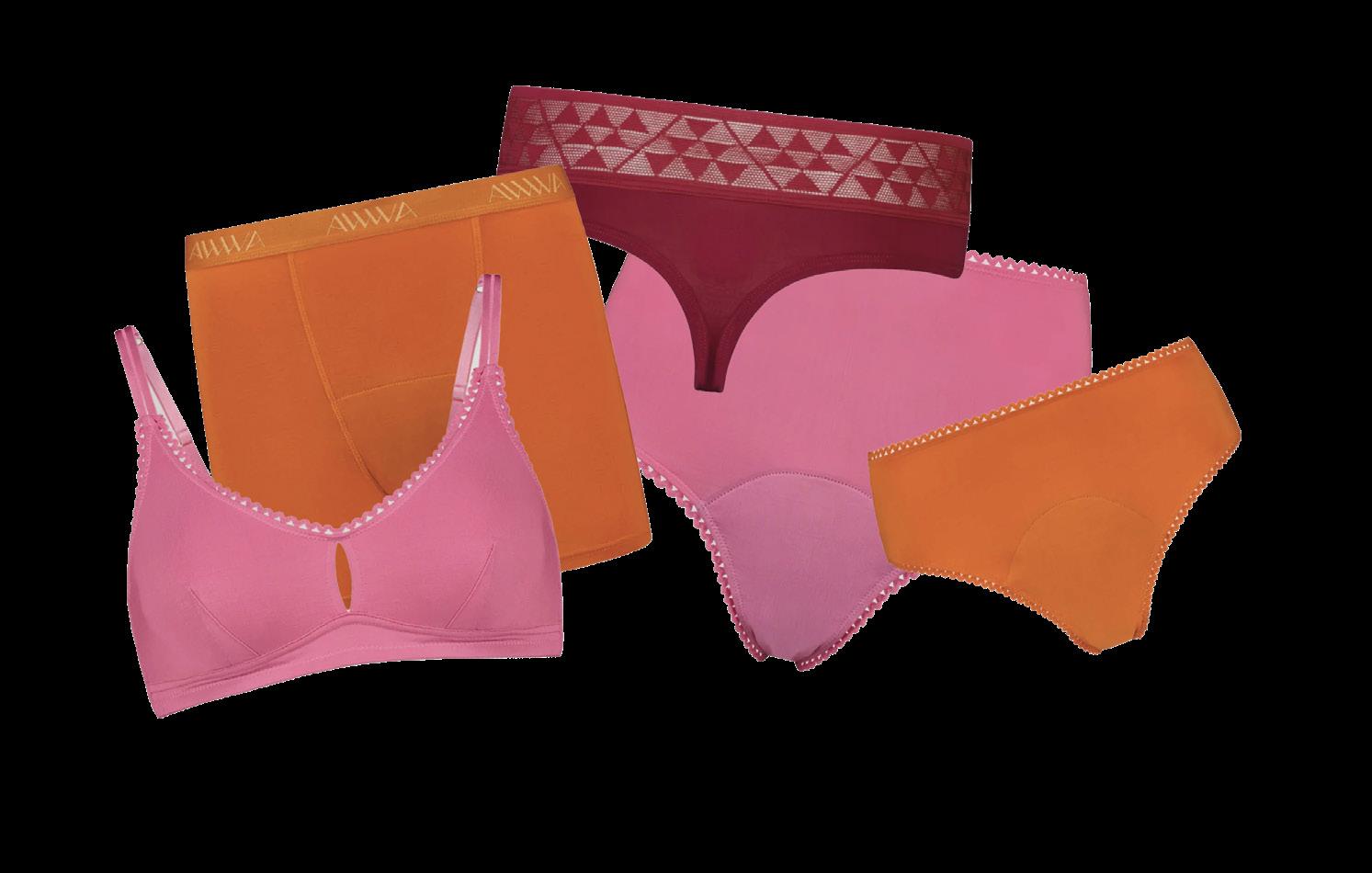
couple years ago, and was drawn in by how beautiful their products and design were. Here’s the thing with period underwear: it’s boring as shit. I mean, I get it, you’re bleeding through them, so go with black granny panty vibes. But why the hell not make them cute? Am I not allowed cute undies on my period? I’m already crampy, my period underwear should not remind me I’m feeling drab.
That’s not the case with AWWA. They’ve got cute colours, like pink, periwinkle purple, khaki green, and rust orange. They’ve got different styles, from cosy, high-waisted briefs to sexy g-strings and matching bras. They even have boxers, which, as a non-binary person, I found very slay. Periods are a huge reminder of my femininity and the intensity my hormones bring into my life, so a little bit of masc energy for my flow week was hugely welcomed. They also have swimwear! I had just accepted that swimming on my period wasn’t an option. I’m pumped to purchase some AWWA swimwear for my summer awa swims in the Ruamāhanga.
Back when I first noticed AWWA, I had just gotten a hormonal IUD and my flow had gone from excessive to almost non-existent. I didn’t feel the need to purchase any undies. But since the recent removal of said IUD, the seven days of heavy bleeding are back, and my AWWA package arrived just in time to support. I got a pair of periwinkle briefs and rust orange boxers and I squealed while opening them. They’re absolutely gorgeous.
I wore the boxers out to the wonderfully sapphic Milk Tooth, Maiden Name, and Sheboy gig, the perfect setting to be in gender-affirming period care. I don’t usually have the energy or confidence to go out on my period. But I did that night and that’s exactly what AWWA products promote. Why should my period underwear make me feel worse when it could make me feel fun and cool?
Skip the supermarket trip your next period and support a local, Māori-owned business. Invest in some AWWA!


Ihave always enjoyed cool clothes and good style. In Year 2 I even had a ‘magazine’ with my friends called Fashion for Passion (I got a bit confused when writing the title). So when the prospect of having an insulin pump (a device the size of an old school iPod) tethered to me for the foreseeable future was brought up, it was not very appealing, especially considering how it would have to coexist with my outfits.
I was diagnosed with type 1 diabetes back in 2016, just after I had turned 13 years old. Type 1 diabetes is an auto-immune condition where your pancreas no longer produces insulin, a hormone that helps sugar turn into energy. It is not from eating too much sugar, and making that joke is both offensive and not funny. To manage it, you measure your blood sugar and manually administer insulin through either daily injections or an insulin pump. I was doing around seven injections a day for about six years until I went on the pump.

I was always against the idea of a pump as I didn’t see the benefits outweighing the tethering situation. But thanks to new technology released at the start of 2022, the insulin pump can now talk to a device that measures your blood sugar. This means it can decide when to give you more or less insulin without you having to approve it, making management easier. I guess this makes me a cyborg!
Type 1 diabetes is an invisible illness. By wearing an insulin pump, or any diabetes tech, it makes the illness tangible.
I know diabetics who don’t like to do any management in public, as there is still a stigma around doing injections or other tasks in front of strangers. It is almost viewed as inappropriate to undertake in public, as if doing an injection or drawing blood from your finger should be something that is kept in the sterile rooms of a hospital or clinic.
Stares and questions from strangers are always inevitable, but I like to think they generally come from a place of curiosity, not judgement. I’ve worn a blood glucose monitor on my arm, which is about the size of a Connect Four chip, since I was 13. I’m now well accustomed to strangers asking about it. As long as they are polite, I don’t mind, and it opens up an educational conversation about type 1.
After the initial shock that the insulin pump was one of the ugliest things I had laid my eyes on, I got to work personalising the device. I added a cute pink case and went on the dark web, US teens on Etsy, for a metallic silver decal. Now it looks less like a sterile pager and more of a nostalgic, pink and silver, 2000s Tamagotchi.
The first hurdle was over and I was ready to see how it integrated with my love of clothes. Over the past 12 months, I’ve worn it in many different locations. I thought I would shed some light onto the trials and tribulations of being tethered to something 24/7.
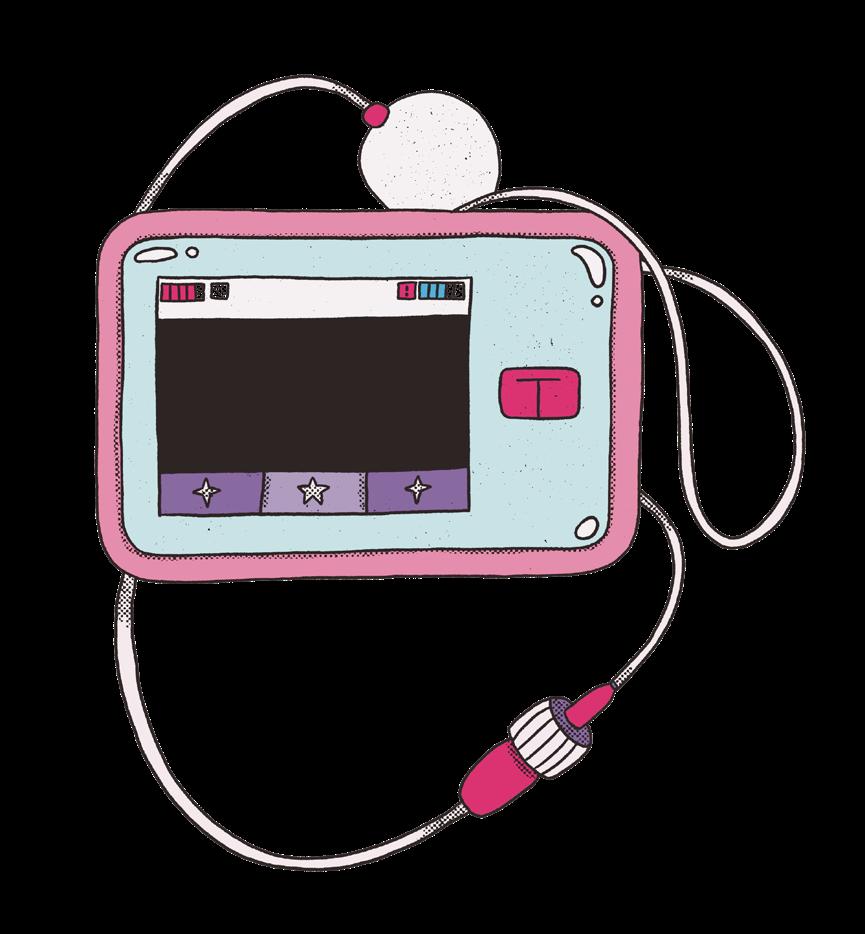
I’m not sure what possessed me, but of all colours in the rainbow, my belt is beige. Your-grandma’s-bra beige. I guess I was going for a ‘nude’ underwear look. It is losing 0.1 of a point because it's very unfashionable and doesn’t integrate with my outfits. Medical-core is not something I want to be displaying to the world.






I got mine custom made by a lovely lady on Facebook called Bizy Lizy for the sweet price of $25 plus shipping. The pump belt is easily the most practical setup and I can wear it while I’m sleeping. I sleep on my stomach, so to make it more comfortable, I can remove my case.
It is also a great set up if you don’t have any clothing to attach the pump to, such as under a dress. This makes sure the pump is hidden and secure. It’s easy to access the touch screen of the pump as the belt has a little clear window. Going to the toilet is a #dream and I don’t have to think about yanking it out of my stomach, which is not a pain I want to have to deal with at 1 a.m.
The front pocket is a classic spot—the flat white of locations. It’s budgetfriendly, as it doesn’t require any extra purchases, unlike the pump belt. And as nearly every pair of pants has a front pocket, it is a obtainable location. It’s very accessible too, as it’s easy to whip out the pump and manage your levels. The only downside is that the bathroom can get a bit sticky if you forget to give yourself enough slack with the tubing.
Dare I say this location is a bit sexy, but maybe not for my masculine-presenting friends. Having the pump secured in your bra is the best place during a night out, particularly when you want to wear a skin-tight dress. This spot also has the added bonus of the tubing being tucked inside the top or dress. A big plus is that it’s very unproblematic for a toilet trip. One night on the town, I made the fatal mistake of putting the pump in my pocket with lots of tubing exposed and a random man accidentally got caught on me. A bit awkward to say the least.
On the downside, having it tucked in means it’s not easy to use and you do get a few looks when pulling it out and re-securing in public. Depending on the person, the pump could upstage the other things going on in that area. But the ~perfect~ bra should mean that this is a non-issue.
A similar situation to the front pocket, except it is less simple to whip out when needed—with the added danger of damaging the pump if you sat down at the wrong angle.
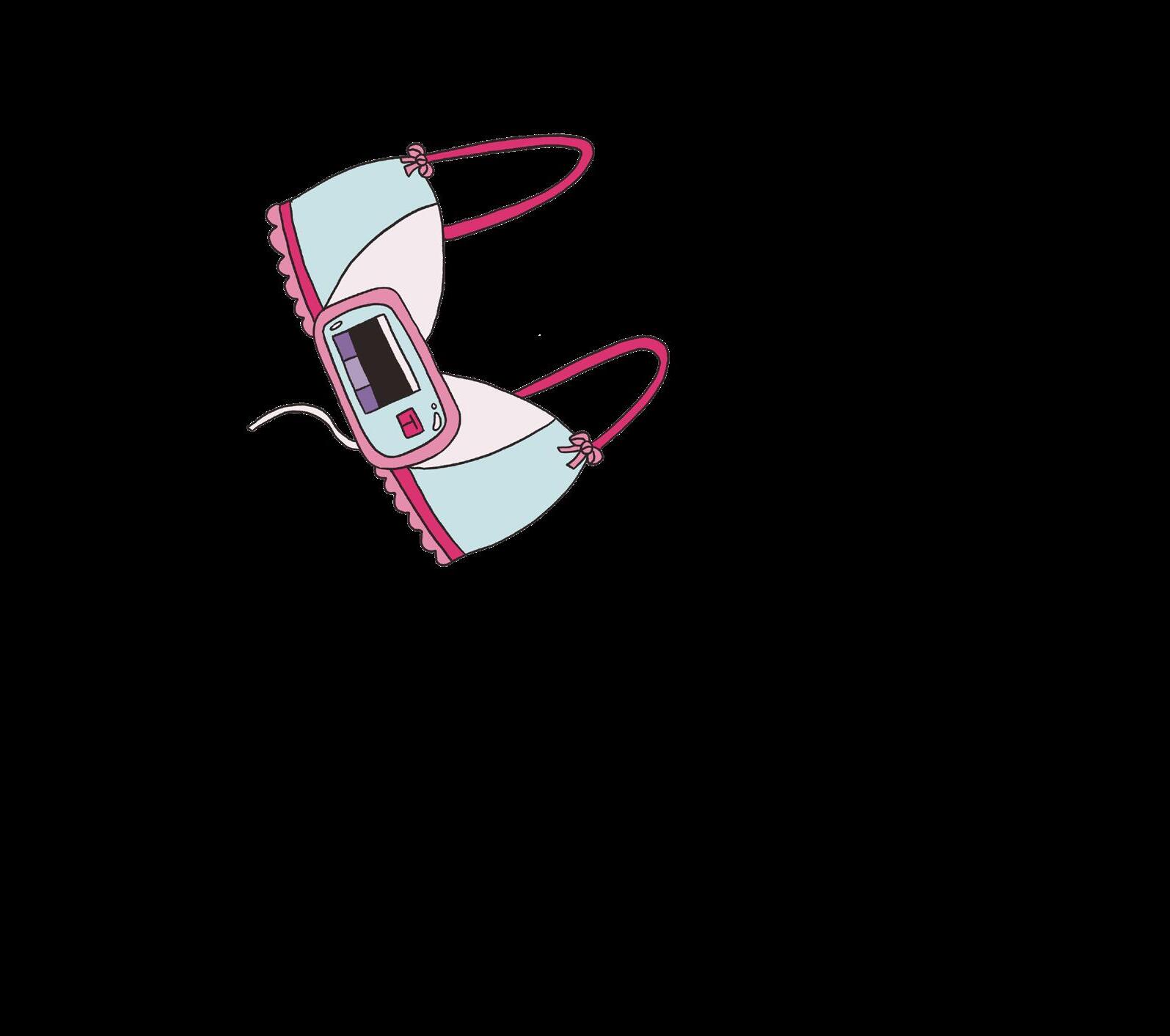





This spot has the same energy as a 2000s dad wearing his flip phone clipped to his belt. It’s a handy but exposed location, and one of my least used spots. When the pump is clipped on, the screen is upside down, so you still have to unclip if you want to use the touch screen. Since it is on the outside of your clothes, both the tubing and device are out and about. This is a bit hazardous with the tubing, as it somehow always finds something knob shaped thing to get caught on.
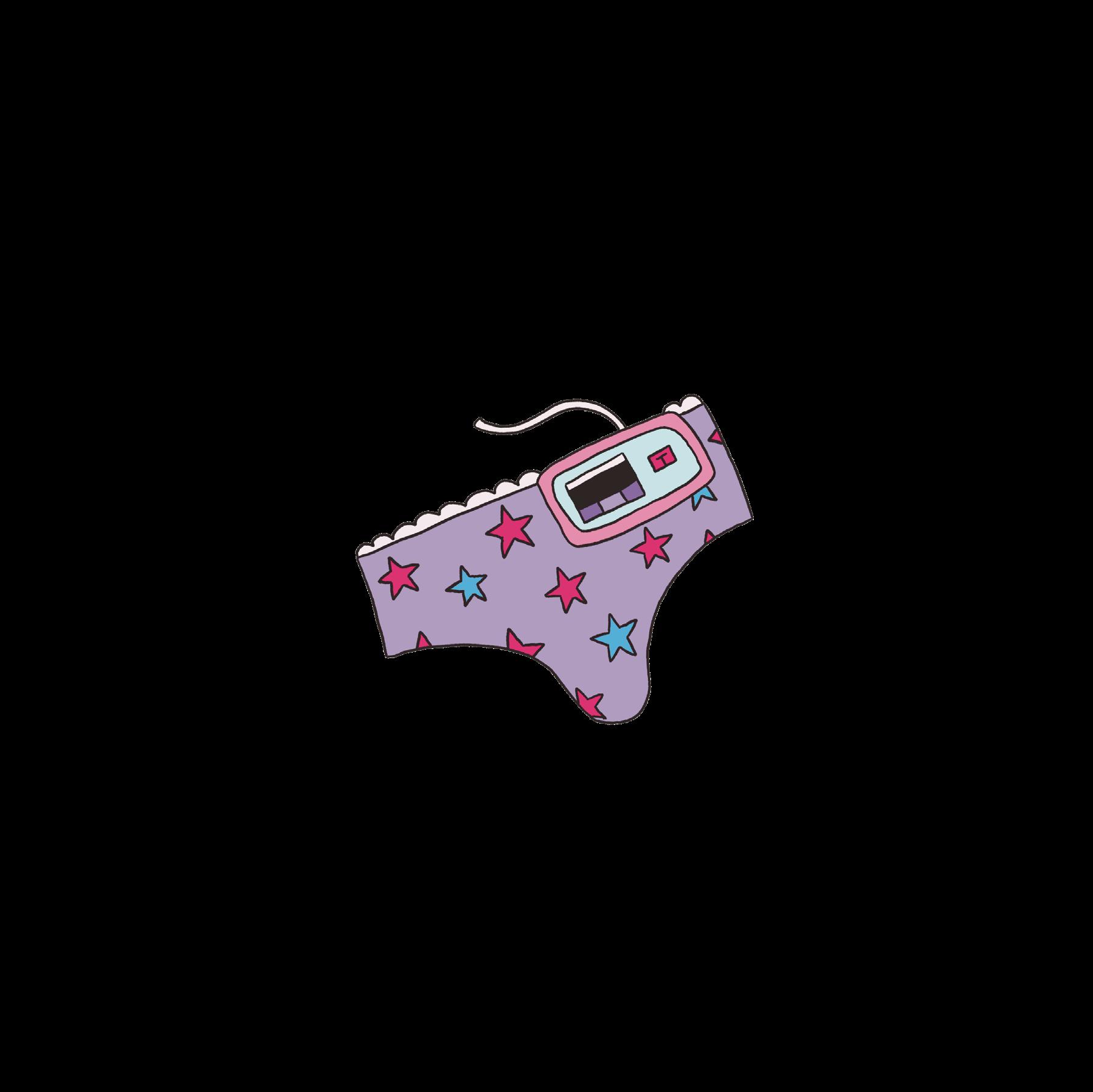
Don’t bother. The physics doesn’t work in your favour and you will stretch your favourite bralette.
This is risky business. I would only recommend it if you're asleep, alone, and you don’t toss and turn. Having the pump loose was my bedtime situation until I discovered a pump belt. I would frequently wake up in a bit of a tangle at 3 a.m.
While it may be free, and almost guaranteed you will be wearing them (I hope), this is hands down the worst option. The structural integrity is not there. The weight of the pump pulls at the waist area and just flops and folds down. Since standing was such a disaster, I didn’t even attempt to brave the toilet.
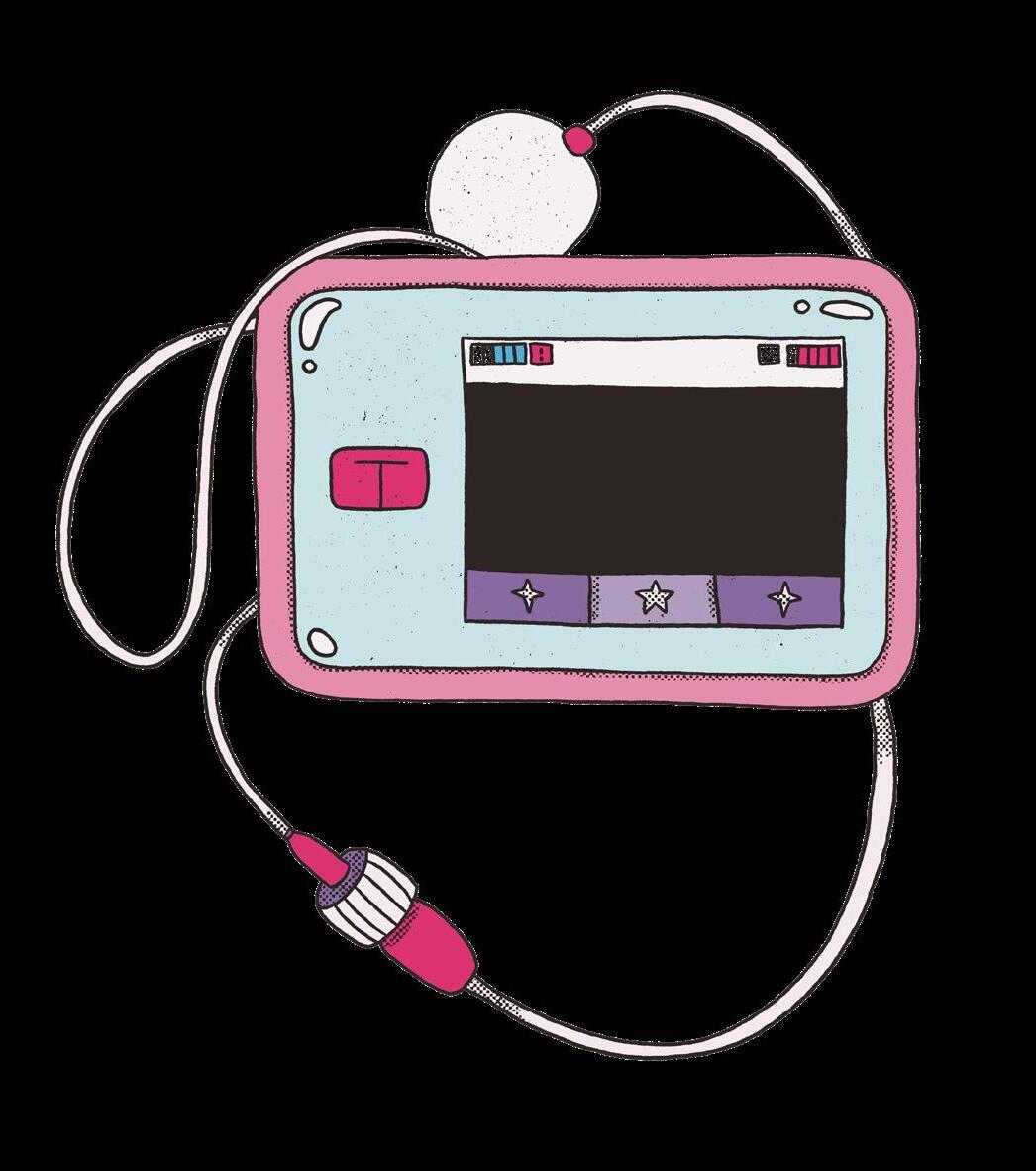

Words by Jaime Elliott (she/they)
Iwoke up today and my stomach hurt.
I think of having to call off work, the multitude of assignments I’m still catching up on from my last period, and and my increasingly growing and stressful to-do-list.
I brace myself for whatever pain my endo will decide to give me—one where I can’t move, or one where it barely registers, accompanied by immense guilt for wasting a good day. I feel defeated by my own body, and I haven’t even gotten out of bed yet.
Endometriosis is an incurable, chronic health condition that affects one in ten AFAB people, though experts believe the number may be closer to one one in four. Tissue that typically grows inside the uterus grows on the outside, which leads to inflammation and severe pain. Its cause is unknown.
Endo can affect sufferers immensely at any given moment. Yet conversations about it are so often hushed before they can start. I have not once walked into a space, spoken about menstruation, and been met with comfort, which I find appalling. Are we still scared of talking about periods when it significantly affects so many people?
Endo Warriors Aotearoa (EWA) has taken massive steps in the journey towards destigmitisation. The charity has inclusive policies and advocates for gender nonconforming sufferers of endometriosis. Jess Sandoval, endometriosis survivor and founder of EWA, told me she started the charity after not feeling that she fit into the support group she was attending.
“I was just real depressed and thought, ‘Well, I can either lie here or I can take everything that I’ve learnt for the last 20 years and help people feel seen'.’’

By normalising menstruation, we increase the chance of younger people with endo being diagnosed far earlier than the current age. It's been estimated that as many as six out of every ten cases of endometriosis may remain undiagnosed. The average age of diagnosis lies between 25-35, and the average wait time for diagnosis can be between 4-11 years on average. Reflecting on my experience, I know I was lucky to be diagnosed at age 15.
Existing research for endo is rife with stigma. A now redacted study published in 2013 was titled, 'Attractiveness of women with rectovaginal endometriosis’. It looked solely at caucasian women, and judged their attractiveness by whether they had lean silhouettes, large breasts, and an early coitarche (age of first having having sexual intercourse). Professionals were appalled from the moment it was published, and ironically, the time it took to retract the study is the average time it takes to be diagnosed with endometriosis.
EndoActive co-founder Sylvia Freeman seeks to fund more inclusive research just as EWA does. “[The 2013 study is] disgusting, it makes me sick. We’re here begging for research funds. Endometriosis is so grossly underfunded globally compared with what it costs the economy, and to know precious money has been put to a study like this is heartbreaking.” Because of research like this, EWA is now looking for funding for further endometriosis research that is inclusive and unstigmatised.
EWA aims to conduct some incredible research. Acknowledging the invasive nature of diagnosing endo in the current day, they have begun studying the potential of diagnosing endometriosis with a blood test or pap smear. They’ve also begun finding participants for a study looking at the benefits of medicinal cannabis for treating endo. Despite pressing evidence of its benefits, this hasn’t been done in Aotearoa before.
With these lofty research goals, funding is a priority. Fortunately, Hell Pizza has started a campaign to raise $66,000 for the charity, which may mean that achieving these big goals is just over the horizon.
When diagnosed, I kept my condition top secret. The thought of someone hearing the crinkle of my pad made me want to crawl out of my skin. When I first heard the word ‘endometriosis’, it seemed long and scary. Funnily enough, it turned out to be a long and scary process. But it would have been considerably worse if I was unaware and undiagnosed. Educating youth on what is healthy and normal in menstruation is so important—coming from someone who pushed their illness to the side out of undereducation on the topic.
Jess has made massive steps in spreading awareness of endo, through using inclusive language, destigmatising menstruation, and educating school students by running
period education classes. “We go in and do them, talk about all things period. The very first thing I do after introducing myself and my story is talk about how menstruation shouldn’t be gendered, and from there the language I use is all inclusive. Because I think it's really important, especially going to schools, to make sure everyone that menstruates feels like they belong to that conversation.”
Jess recalled a 12-year-old girl approaching her after her class. “I’ve been bleeding for three months, is this normal?” she asked. Jess told her 'no', and asked if she’d spoken to her parents about this. “No, we don’t talk about this stuff” was her reply. If those period education classes weren’t there, she would have continued struggling silently.
“If the youth at school are going through that much bleeding, they’re not gonna be active in school, they’re not gonna be able to retain the information they’re being taught, and they’ll be in pain, tired, lethargic,” Jess said. There are so many young people in similar situations, and it’s not okay to neglect this serious issue. It isn’t right to only learn to understand your body when there is something wrong with it.
An Australian study conducted in 2023 called "It just stops me from living’: A qualitative study of losses experienced by women with self-reported endometriosis’ estimated that, financially, those with endo lose $30,000 per year through lost work productivity and medical treatments.

Though these results may seem grim, research like this is a massive step up from the redacted study I mentioned prior. Research is being done for people with endometriosis so their lives can be improved in the future.
Like Jess says, it is incredibly hard to be a student with endometriosis. It can make my performance poorer than what I know I'm capable of, and it’s frustrating. It’s even more difficult to be a student who is also working, like so many of us are. “Trying to study, trying to work just to pay for life, and trying to manage this pain is hard. Like, you take time off work, and then you don’t have enough money to pay for things. You can’t take time off uni because then you fail… It's like, what do you do?” says Jess.
EWA is the first endometriosis charity to advocate for queer endo survivors. Jess makes spaces for everyone with endo, as it is a lot to burden alone. People can reach out to the charity for access to TENS machines, help with booking and funding appointments, and further support for queer people with endo. Ultimately, Jess shares, “Our goal is to have a building where people with chronic pain can come in and know that it's a safe space to sit.” If you want to donate, you can do so at endowarriorsaotearoa.com, or you can follow them on instagram @endowarriorsaotearoa.

Managing an invisible disease with a stigma attached to it makes the process more difficult than it needs to be. Not all employers or lecturers fully grasp the severity of the condition, and it can be exhausting to have to explain it so frequently. Having to pace yourself constantly and make those around you aware can be really really draining. The discomfort is worth it, though. I do it in hopes that another survivor sees me speaking about it, and has the courage to speak about it too. I do it so my family and friends speak about menstruation openly.
In exploring my identity as a queer person, I felt the need to explore where my chronic illness fits in. If I’m going to have it for the rest of my life, it's an important part of me that must be acknowledged. I’ve made an effort to speak about it more, and sit with the discomfort the room brings me in an attempt to advocate.
I ask you to speak about menstruation, tell a friend when you need to walk slowly because you’re having a bad period, and and support your loved ones who menstruate.
Our illness may be invisible, but we are not.


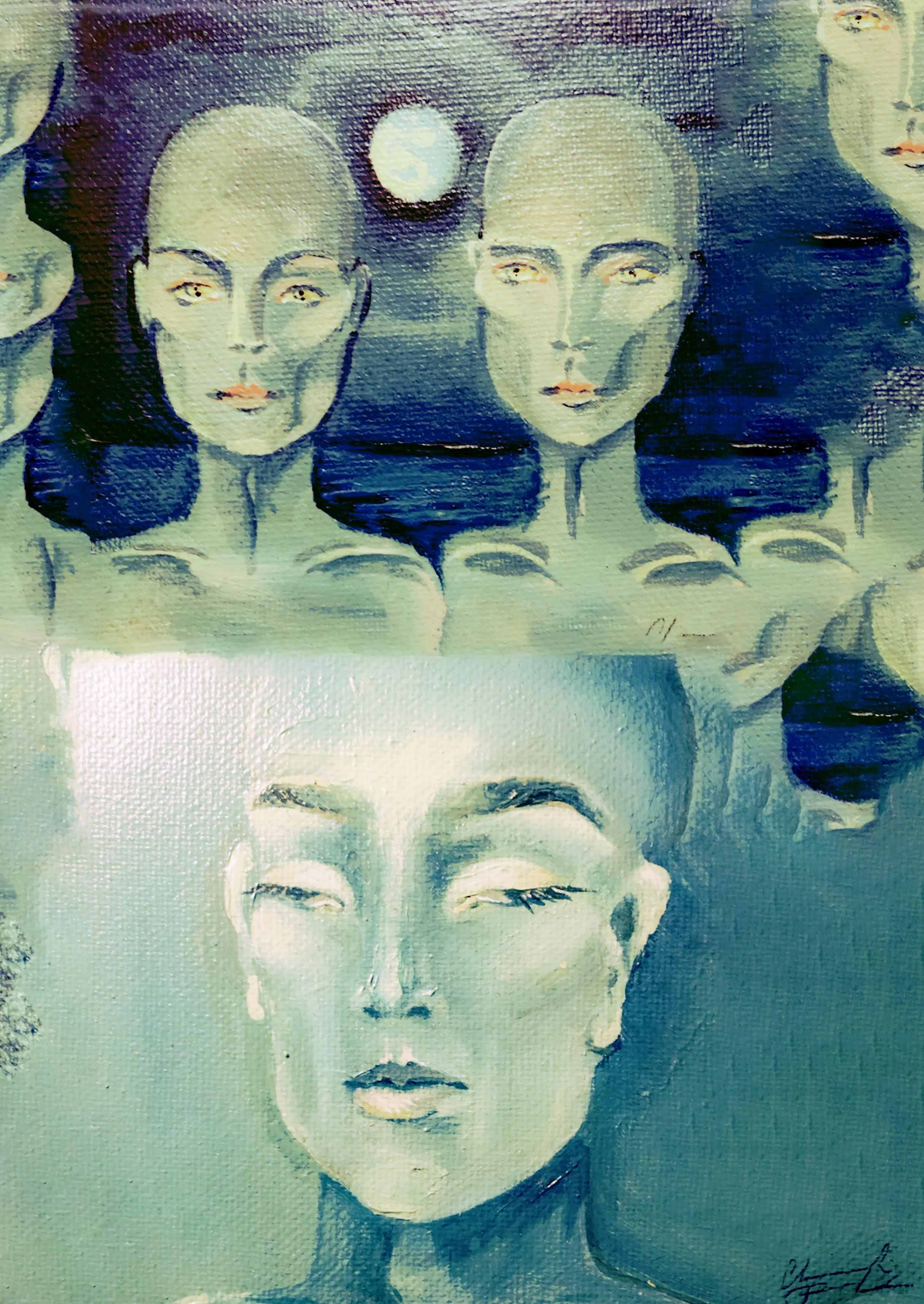
 Words by Niamh Vaughan (she/her)
Words by Niamh Vaughan (she/her)
My brother has undiagnosed autism. Our parents recognised his autism when he was about 9-years-old, but without the support from any of the three schools he attended, he was unable to be officially diagnosed. Now we are in our 20s and a diagnosis still seems unavailable to him.
Not long ago, I was at my brother’s house while he was scrolling through r/autism. I was complaining about how messy his room was and, almost as if it was summoned by my words, a meme on his computer screen popped up calling out neurotypical people for not being understanding of autistic executive function. I asked him if he’d ever get diagnosed to receive more support. I was surprised to hear he had decided pretty firmly against it. Other than the impossibly long waitlist, a diagnosis comes with other limitations, he told me. Apparently lots of countries have laws against autistic people immigrating and he doesn’t want to have his dream of a life overseas cut off.
I couldn’t believe it.

What countries could be so openly discriminatory and how could they possibly justify such exclusion? My brother started listing places he wouldn’t be able to live with a diagnosis: Singapore, the UK, and even Australia. “Lucky I was born in New Zealand,” he said finally, “because if I didn’t, I wouldn’t be allowed to move here either.”
“I've refused to get a formal diagnosis because I grew up in Australia and plan on moving back there eventually,” Teddi, a fellow Salient writer, told me. “Because I don't have a formal diagnosis, [I feel like I can’t] be out and proud about [having autism] because I can get discriminated against [and] I'm not legally protected. The fact that I want to get citizenship in Australia means that I lose the protections I get from being diagnosed.” Teddi explained that though Immigration New Zealand (INZ) does base their decision off whether an individual has ‘severe’ autism, the measure and use of functionality labels within autism is still problematic. “[Whether someone is high or low functioning is based on] how they interact with neurotypical people. It's nothing to do with how you are able to function within your daily life. It's basically [just] how well can you [mask or] pretend to be like everyone else.”
According to the INZ Operational Manual, my brother
and Teddi fall into one of the many groups that do not meet the ‘Acceptable Standard of Health’ required to receive New Zealand residency. And it's not just autistic people being discriminated against by NZ policy. Some of the “medical conditions deemed to impose significant costs and/or demands on New Zealand's health and/or education services'' include physical disabilities, intellectual disabilities, brain injuries, psychiatric illness, and addiction or past hospitalisation, along with an extensive list of medical conditions. Those with Alzheimer's, Parkinson's, or those who are paraplegic may be denied residency, often at the cost of separation from their families.
Though it seems like very few Kiwis born with residency know about the Acceptable Standard of Health policy, our news is flooded with horror stories of rejections every year. Registered nurse Jeena Rose had a daughter denied residency due to Marfan syndrome, despite four individual doctors’ notes deeming the young girl’s condition to be no risk to the health care system. Last year, Eder Rivera was denied for being, quote, “too fat”. INZ determined his BMI (body mass index) to be a “severe risk”, despite Rivera’s doctors saying he was in good health. Petro Viljoen was denied residency for similar reasons, all while her husband was dying of cancer and she had to leave him in New Zealand. Gail Alfonzo and her partner were granted residency whilst their autistic daughter was denied, and Professor Dimitri Leemans and his family was forced to leave after immigrating to New Zealand because of his autistic step-son.
Juliana Carvalho had a very public battle against the Acceptable Standard of Health policy, and can tell one of the very few stories with a happy ending. Carvalho first applied for residency in 2014. As a wheelchair user and person with lupus, she was unhappy with INZs health policy, but she still remained confident about her application. She felt like she deserved a medical waiver because of what she could bring to New Zealand after an illustrious career in Brazil. “The process is so bureaucratic, stressful, humiliating, dehumanising,” Juliana told me. “You need to prove your value, prove that you deserve to exist and to be here.” For a medical waiver, an applicant’s potential worth to the country is measured up against their potential cost. Juliana’s lupus had been stable for ten years and she was in remission. She was working full-time and paying taxes. She had strong evidence of a high-profile career back in Brazil. Almost her entire family was living in New Zealand with her. Yet her application was rejected.

Ironically, the threat of potential deportation caused enough stress for Juliana to end up having a lupus flare. Even still, the first thing she did after being released from hospital was go straight to the Ministry of Justice. The Immigration and Protection Tribunal decided INZ had done an unfair and incorrect assessment of Juliana’s medical waiver. The judge even told Juliana that it could have only been someone who didn’t pay any attention to the wealth of her contribution that could’ve made such a decision. So began the second wave of her medical waiver. “But after another 19 months of trying to prove my value,” Juliana told me, “they said no for the second time. I couldn’t even read the medical reports. It was so awful. So awful to be reduced to a price tag [...]. I was working full time, paying taxes like everybody else [...]. It was like I was broken. I got really, really depressed, doubting my value as a human being.” Juliana started to feel like the burden that New Zealand was so determined to tell her she was.
This stress and depression caused more health issues that sent Juliana to hospital eight different times in a year. “Christmas, New Years, my birthday, all in hospital—it was the year from hell.” When Juliana applied for yet another work visa, again it was a ‘no’ on grounds of her recent hospital visits. All her years of contribution to the country were ignored in favour of 12 months that Juliana didn’t feel reflected her actuality. “My reality was denied,” she said.
But it was still against her core favours to give up. “I came to the realisation that this was not just about me. This was bigger than immigration–it was about [fighting against] the whole narrative that if you have a disability or a chronic health condition you are less of a human.”
Juliana decided to fight till the end for change.
She started with a petition to end discrimination to honour the UN Convention on the Rights of Persons With Disabilities—focusing on Article 18 which is concerned with liberty of movement and nationality. Next was an open letter to the New Zealand Immigration Minister, and a video
detailing all the things she could do as a wheelchair user—drive, ride a horse, dive with sharks—but still not attain NZ residency. All at the same time, Juliana had 42 days to appeal against her impending deportation. Again, another ‘no’. INZ deemed her more able to restart life in Brazil, and only gave her three months to get her affairs in order, say her goodbyes, and leave the country.
The last option for Juliana was ministerial intervention. She wrote to the Minister of Immigration, but in the same week that her appeal was lodged, the first Covid-19 lockdown hit. She was able to work again because of another threemonth working visa, granted and extended thanks to New Zealand’s desperation for migrant workers. Then one day at work, Juliana got a call from her lawyer. The minister had made a decision. After years of a seemingly endless battle, she had finally received her well deserved residency.
It wasn’t long until Juliana banded together with others affected by INZ’s harsh policy and formed Migrants Against Acceptable Standard of Health Aotearoa (MAASHA), an all-volunteer group created to support and advocate for others affected by the unjust health policy. Umi Asaka, originally from Japan and also involved with MAASHA, told me about her experience of receiving residency in New Zealand. “I received mine through the Resident Visa 2021 (RV21) pathway, but if it wasn't for that pathway, I don't know if I've ever gotten it.” Umi is also a wheelchair user due to her osteogenesis imperfecta, a condition that gives her more fragile bones than other people. Though Umi says her condition was not specifically on the list that “discriminates and rejects people”, when she was on her initial student visa, she was still forced to get a medical assessment every year instead of the standard one every three years. “It was a strain [both] mentally and financially,” she said.
The RV21 pathway was created during the midst of the pandemic, and during a migrant and worker shortage. The only people in need of a medical waiver were those in

full-time care or supported with dialysis. People like Umi were able to receive their residencies without the mental and physical battle the Juliana had to face—the battle that Umi was expecting. “I joined MAASHA before I actually found the RV21 pathway, so I know how much of a challenge it could have been.”
MAASHA’s vision is to abolish the Acceptable Standard of Health policy and create a community for individuals and families impacted. The focus is on both individual and systemic advocacy by providing support for people as well as working to deconstruct the policy itself. “It’s like they use a crystal ball, because how on earth can you predict what will happen with someone’s condition, or how much someone will contribute to the country, [...] especially [with the] kids [affected],” said Juliana.
“It all comes down to how we value disabled people,” Umi continued. “The irony of this policy is that if you’re a migrant [who] got latency then had an accident and became disabled after, there are no implications for that. But if you are disabled from the beginning, then you are automatically rejected from settling in the country. [...] Anyone can become disabled at any time in their life, and it doesn’t make their life more or less valued than before.”
This policy reduces disabled people to a perceived economic burden.
For Juliana and Umi, their advocacy isn’t about disproving their ‘perceived cost’, because to them, that’s easy. Their work is about fighting for justice so that, in future, people like them won’t have to exert copious amounts of energy to validate their existence and prove their worth to this country. The RV21 pathway is a first step from the government of recognising the value of our immigrants. At the time of its creation, the healthcare system was under the most strain in recent history, yet this wasn’t in consideration when the
country was desperate for workers. When push came to shove, the country noticed just how valuable immigrants are and that their value was far superior to any predicted cost.
We can adopt the mindset that disabled people are too expensive if we want. We can play the game of prediction and forecast the worst possible scenario. We can accept the Acceptable Standard of Health. But such an action lacks the logic and reason that it boasts. Even if there’s a could-be resident with one of the conditions on the policy’s list, there’s no stopping an ablebodied resident from developing the same one tomorrow.
There’s no way to determine how much healthcare a person will need to access. And if the Acceptable Standard of Health exists to prevent strain on our public health system, then why does INZ refuse to take into account whether an individual has access to private healthcare?
C’mon NZ government, tell us what the real motivations are here if they aren’t ones solely based in excluding disabled and chronically ill people.

At best, this INZ policy is outdated, archaic, and discriminatory. At worst, it's deeply ableist and upholds pro-eugenics values. This policy dictates the fate of thousands of people a year, and a change is not only morally imperative but well overdue.
This injustice is everybody’s problem.

This isn’t just a neurodivergent or disability issue.
It’s a human rights one!

When I started my degree, my plan was to put my love of languages to use. I wanted to become an English for speakers of other languages (ESOL) teacher. As a foreign language learner and enthusiast myself, I thought learning about how English is taught would enable me to know about the best ways to learn and teach languages.
VUW has an extremely high-ranked program for Teaching English to Speakers of Other Languages, or TESOL. I mean, our previous lecturer Paul Nation literally wrote the world-renowned textbook.
In 2022, when I was taking TESOL, I was having a rough time with my health. I was housebound, often bed-bound, for days at a time. Studying while chronically ill or disabled is extremely difficult. You’ve got to balance lectures, tutorials, and assignments alongside weekly doctor's visits, specialists appointments, and prescription pick ups. It was nearing the end of the Trimester, and the practitioners I was seeing recommended getting an aegrotat pass. There was going to be no way I could finish to a passable standard without my health declining.
For those who don’t know, an aegrotat is an automatic pass grade certificate. It can be granted if you are unable, for whatever reason, to complete an assignment, attend an exam, or anything else needed to pass a class.
According to the university’s assessment handbook, an aegrotat should only be used “in cases of last resort when it is not feasible to adequately accommodate the student’s circumstances by means of extensions.” It takes into account your situation, and acknowledges your past grades and the efforts you’ve made toward completing your work.
The process of getting an aegrotat, usually, is not difficult. Which is exactly what you need if you’re in a state that requires you to apply for one. If you’re applying due to health issues, then you’ll need a medical certificate from a GP that states you are unable to work for the rest of the Trimester. You also will need to have completed at least 30% of the total assessable course work to an okay standard, so that the Head of School can agree you were on track to pass the course and have a solid understanding of the subject. When I filled out the form on the VUW website, I was put in touch with a Disability and Inclusion advisor to help me with my supporting documentation.
I had submitted two out of three assessments for TESOL301 and it was my final year of taking TESOL courses. Unfortunately, in 2022, TESOL was not a subject that took to dual delivery well. It felt like the lecturers had never had any experience with teaching distance, disabled, or chronically ill students. I felt like a nuisance— the lecturer made remarks about how teaching online was terrible. They made comments about how it wasn’t not equal to being part of a classroom environment, with no sympathy that I couldn’t change my situation.
Dual delivery was first implemented during the Covid-19 pandemic to accommodate lockdowns and isolation periods. Even before 2020, disability advocates at the university had been campaigning for dual delivery in all classes. According to the university, they “no longer have the need to operate primarily in dual mode and are keen to reinvigorate its vibrant campus community.” They are still determining their future direction and updating their policy around both dual delivery and availability of lecture recordings.
The TESOL industry, for the most part, is one of great privilege. Language tutors can make a lot of money teaching ESOL and there are a number of high-profile roles in the private sector. Travel isn’t overly accessible to disabled people, so while it wasn’t surprising to have a lecturer with a negative attitude to accommodating disabled students, it was deeply upsetting.
Lecturers should be uplifting. I should have been made to feel like, despite my health issues, I still had a shot at reaching my goal of becoming a teacher. Instead, there was no empathy, and I don’t think they even looked at my individual access plan (or IAP, which, for context, is a plan that describes the changes a student will need to be able to complete their study). My IAP stated I was a distance student so I could study while in hospital. Being mandatory at the time though, lecture recordings were extremely helpful in my other classes and were the reason I was able to complete my degree.
While dual delivery is available in some TESOL courses at 200-level where it is “appropriate”, the university told Salient, “as the TESOL major focuses on language teaching, online delivery is not possible in all courses and a limited amount of in-person attendance is required.” For TESOL301, the university explained that it was made clear that inperson attendance would be required. While they could not comment on my specific case, they did say that accessibility accommodations are made for students registered with disability services on a “case-by-case basis”. For TESOL301 specifically, they said, “In addition, for those who cannot attend courses such as TESOL301 in person, TESOL can be taken as a minor, rather than a major.”
When I went to the VUW disability advisors about my IAP, I was adamant it had to include that I needed to be excused from attendance requirements. I asked specifically about the TESOL attendance requirements and the advisor reassured me I could get them waived. I had a book of doctor and hospital certificates and I was reassured that this should be enough. I wish I had got that in writing. Any time something feels uncertain or complicated, get it in writing. Even now, I keep thinking that if I had the advisor’s statement I could have gotten an aegrotat. But I didn’t.
I was denied the aegrotat. The two assignments over 30% of the coursework were considered moot due to my lack of attendance. It was a flat ‘no’ to changing the last assignment to be accessible for me. Changing the class requirements to become accessible for me was deemed ‘too much’.

The lecturer’s ‘compromise’ was for me to do the assignment as it was given. My aegrotat request was valid and I should have been granted it, but instead I put in all this extra effort with such ill health.
This whole experience completely deterred me from returning to a language classroom. I doubt I will ever return to any classroom experience at VUW, especially if mandatory dual delivery fails to return. I’ve learnt that it’s a lot cheaper to study by myself at home. The only reason I now have a postgraduate certificate in TESOL is that I knew the postgrad lecturer well before the course started, and thankfully for me, he goes above and beyond for his students. Lecturers should know university is hard for any student. I’m not asking for above and beyond. All I was asking for was that my IAP be followed and my chronic illness and disability be acknowledged.
I loved my time at VUW, but unfortunately, I feel I’m not welcome as a disabled student. I shouldn’t have to use all of my remaining energy to stand up for myself. I shouldn’t have to shout out to every lecturer that I am disabled and convince them why I’m a valid and dedicated student. I shouldn’t have to justify to them why they should accommodate me. Unlike me, these lecturers have the power to say no.

home-body is a podcast centred around the experience of living with chronic and invisible illnesses and disabilities. home-body is a haven for the chronically ill and disabled bodies that are consistently bound to their blankets and bedrooms.

home-body is for anyone who has ever suffered in silence. It will be a channel of voices to uplift the unheard, unseen narrative of living life played at a lower key. A podcast to promote self-care, love, and connection with the hopes of a world filled with transparency and balance. A space for us all to realise we’re allowed to look after ourselves, and health and well-being are not linear.

✦ ✦ ✦
Kia ora, I’m Fran, one of the Salient Co-Editors. You may know me from the editorial or from flicking too far back to the team’s page when you’re searching for the puzzles.
Before I got this gig working in the big boy box alongside the wonderful Maia and our excellent designer Bella, I was in the Salient Podcasts game. I started in 2020 as Podcast Producer/Support alongside my freelance podcast work, and then became the Salient Podcast Manager from 2021-22.
Anyway, this isn’t a CV, let’s move on…
I’m back to take over this page for ‘Health and Disability’.
For the graduate project in my Communications degree, I created the pilot episode of a podcast project about invisible chronic illness and disability called home-body. I spoke about my own journey, and interviewed five guests about their experience and expertise on the matter.
I’ve always had a strong interest in health, particularly mental health. Coming from a refugee background, I grew up with mental illness consistently present. I always hated how physical health was prioritised and taken more seriously than mental health. I felt this more intensely when I grew to also combat my own mental illness (anxiety, depression, and premenstrual dysphoric disorder). I hadn’t come to terms with it during the creation of home-body, but I am also neurodivergent, another invisible chronic condition.
I suffered from a concussion in 2021. I had consistent post-concussion syndrome, and it completely changed my life. I completed most of my degree on a different schedule and from a distance, even when Covid restrictions had been lifted. I had very little energy for a social life or work and spent most of my time
in health appointments, taking sleeping or pain relief. I was in and out of A&E and the hospital. When I had the energy to come to work or uni, or see friends, it was confusing to others when I needed to leave suddenly. No one could see my illness.
Diving deep into the chronic illness community, I realised my mental and hormonal conditions could be considered invisible chronic illness or disabilities. I wanted to use the final part of my degree to create positive action with communication. A podcast was the best format, as reading can often be a lot of mental effort when you’re fatigued. I wanted to share my story alongside the advice of others. I wanted the stories to be honest and vulnerable, yet not entirely focused on the hard hitting reality of living with a chronic condition. Instead, I wanted these stories to illuminate the successes, connections made, and lessons learnt within this experience. The root of the problem is that health isn’t spoken about in a way inclusive of invisible conditions and disabilities. home-body, I decided, would start that conversation.
Ignorance within health discourse leads to the deep stigma, misunderstanding, and mistreatment surrounding mental illness, neurodivergence, hormonal health, chronic pain or illness, and disability (visible or invisible). With the rise of internet communities, as well as the adaptations to Covid-19, we are seeing slight progress pushing through the mainstream. There has been a rise in mental health and well-being and spiritual practices being promoted through social media. The Covid-19 pandemic has made a significant difference in how institutional, educational, and workforce structures see the health and well-being of their students and staff. For example, there is now more leniency with sick leave, work via correspondence, and due dates.
For the most part, however, there is still a huge gap in the universal understanding of health and a deep
stigma surrounding disabilities and chronic illness: mental, physical, invisible, visible, neurotypical or divergent. The current health system’s main solutions are quick-fix, band-aid solutions. They don’t seek to examine each individual and their health and lifestyle holistically to support them toward a better quality of life. There is a strong need for podcasts like home-body, to centre the voice of those who experience the largest effects of this stigma. Although it is focused on spreading awareness for ICI and disability, this podcast is for everyone. It seeks to promote a culture that allows us all to communicate openly and honestly, understanding that health, well-being, and ability fluctuate for everyone, and that is okay!

One of my guests, Jess Brien, and her podcast That’s So Chronic, was a huge inspiration for this project. Here is the podcast blurb and a link if you wanted to check out another great honest yet lighthearted, conversational podcast about chronic illness:

Sharing patients’ stories and discussions while having a laugh and keeping it real. A weekly podcast where Jess Brien interviews some incredible people from around the world that are thriving—and sometimes only just surviving— with chronic illnesses, life-changing injuries, and potentially disastrous diagnoses.
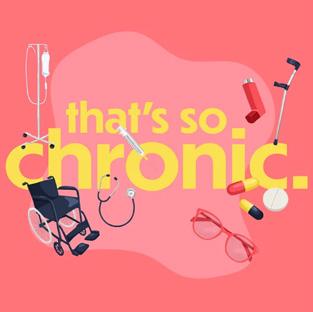
Hey mum I don’t know what is in my head Concentration that’s what I don’t have Attention never is enough Time management oh god that’s just shite
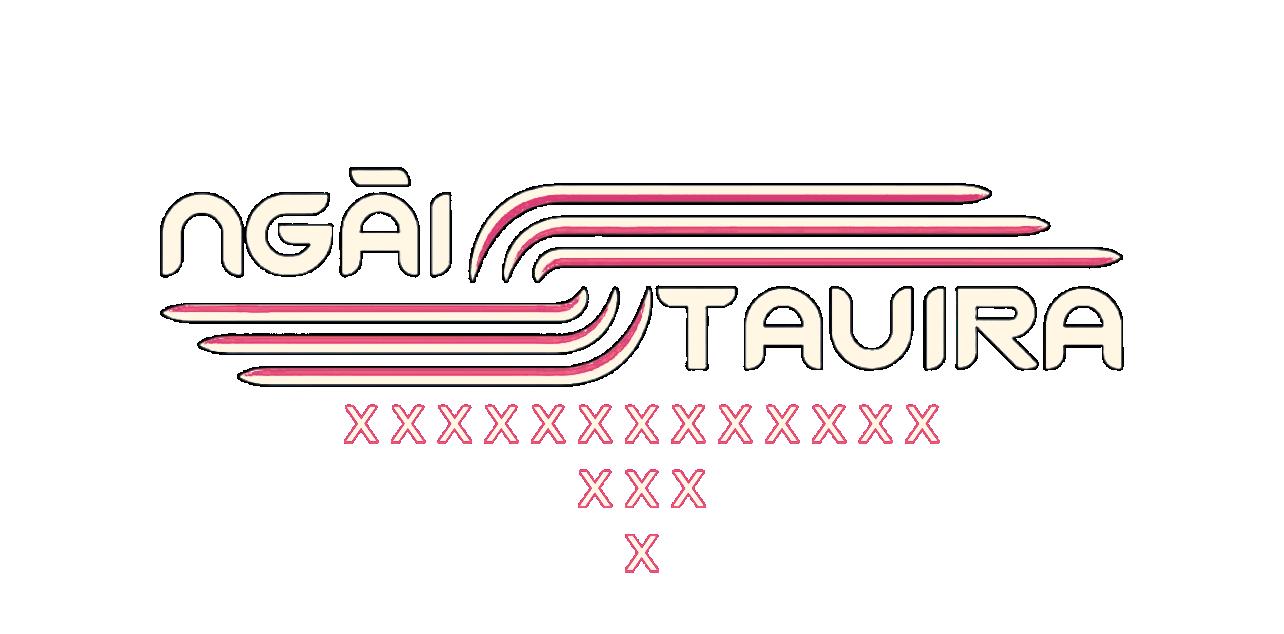
Hey dad sorry I screw up From time to time, don’t be mad at me Plans that never happened oh yup Tasks that aren’t even done you know
Hey bro I don’t feel alright Things are running through my head But yea nah they don’t stay Though I’ve tried so hard, it’s always the same
Hey man what you’re thinking of? Oh me? I don’t erven know My world seems strange af You wouldn’t even understand
Hey someday it ain’t bad But most of the times it’s hōhā as The world through my wairoro Well yea it’s different from yours
Hey I think I feel great Nothing’s broken within me I guess But wow after all these times I have just been in my Takiwātanga all along.


First things first, listen to your gut. If you’re questioning it and have any feeling that it’s weird, then it probably is.
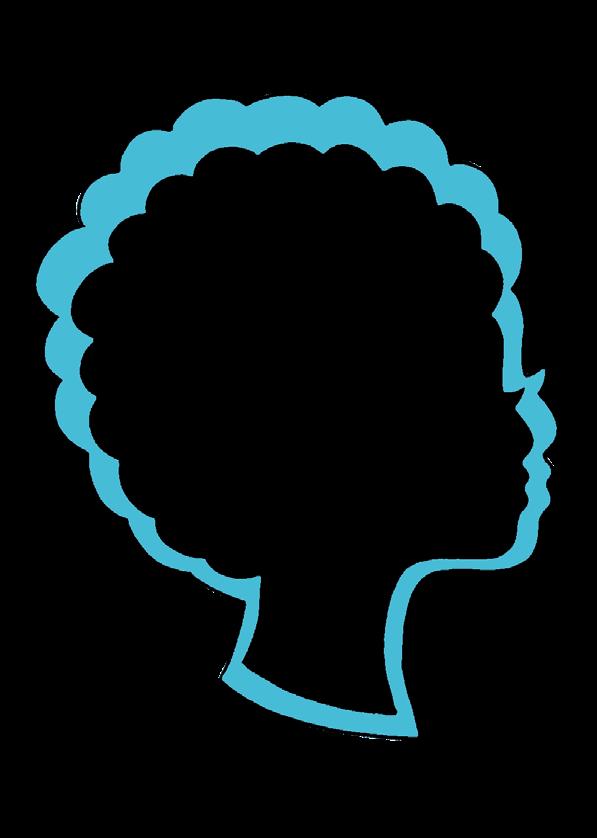
The appropriateness of an age gap in a relationship depends on the individuals involved. Let me clarify: if you were to ask me the same question about a 16-year-old and a 21-year-old, I would raise a red flag. However, as long as you’re both not under age, a person's emotional maturity and life experiences are not solely determined by the number of years they've orbited te rā.
Two individuals who are both 20 years old may have vastly different levels of emotional maturity and life experiences. Someone who is 23 may be a lot less mature than someone who is 21, depending on their background. Age is just one contributing factor and doesn't exclusively define a person's personality, thoughts, or actions.
Nevertheless, there is an inherent issue with power dynamics that can often accompany an age gap. This can lead to the potential exploitation of the more vulnerable partner. Although the questioning from family and friends about an age gap may be frustrating, the truth is that where there's smoke, there's fire. Significant age gaps do have the potential to be exploitative.
This is highlighted in pop culture. Phoebe Bridgers released the song ‘Motion Sickness’, targeted at Ryan Adams, a singer 20 years her senior who Bridgers has spoken out against for his
A .sexual misconduct and manipulation. Then in an iconic move, when sharing the stage with Billie Eilish, Bridgers got Eilish to sing the line from the single “And you, you were in a band when I was born". This was to highlight the fact that Eilish (21) was publicly dating a man 11 years older than her.
We aren’t all Phoebe Bridgers and Ryan Adams. Not all relationships with an age gap are unhealthy, and not every relationship with an unbalanced power dynamic has an age gap. Like I said earlier, you need to ask yourself: are you scared of the age gap and its stigma, or is your partner abusive? Do you feel taken advantage of or vulnerable?
Age gaps may enable and contribute to controlling behaviour, but I am unsure if it is fair to assume that someone is weird or creepy solely because they are five years older. If your partner is creepy, exploitative, or abusive, it’s because of their personality, not because they popped out of a vagina five years before you.
In response to your question, an age gap does create a greater potential for power imbalance, but so does a being with a shitty person. It's important to note that the age gap itself does not guarantee that your relationship shall have problems; and if you have problems, I doubt the age gap is the sole reason for them.
It is ultimately the individual's personality, thoughts, actions, and decisions and how they go about having a relationship that determine a relationship's health. I would ask the people closest to you what they think of your partner, after they’ve been around them and got a gauge of your dynamic. Often our friends can spot red flags, or even green flags, better than we can.
But at the end of the day, trust your gut. If you think it’s creepy, it probably is! But if you’re happy and just worried about what others think, then remember that it’s your relationship, not anyone else's! Just because there’s an age gap doesn’t mean it’ll be unhealthy.
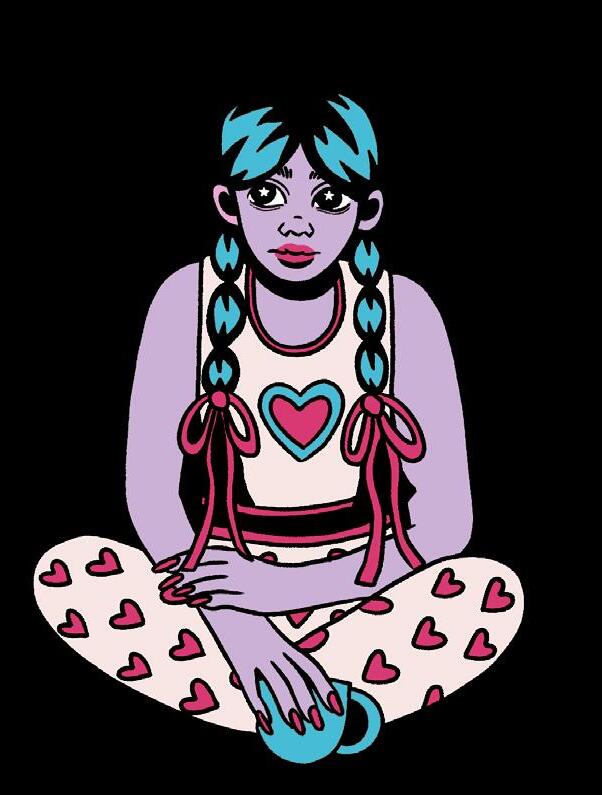
Q.
Is a significant age gap in a relationship weird or creepy, for example, the gap between 20 and 25 years old?
Words by Bianca Maria Schioler (she/her)
Continuing the winter warmers theme to keep you fed and cosy through the colder months, I present my absolute favourite, go-to lazy meal: vegan chilli con carne. All you need are long-lasting ingredients you probably already have in the pantry—if not, go buy them now and keep them on the shelf for emergencies. Everyone needs an easy, comforting meal they can make with stock-standard ingredients that are easily topped up. It doesn’t even taste like a canned meal. This vegan chilli con carne easily tops Zambrero anyday.
This recipe makes a large dish, with up to five servings. It’s perfect for a flat shared dinner night or weekly meal prep, and probably outlasts you in cool climates (you can refrigerate for up to four days).
Makes 5 portions
• 1 can of lentils
• 1 can of sweet corn
• 1 can of diced tomatoes (no added ingredients or sugar)
• Old El Paso nacho spice mix (add to ½ cup of water)
For the basic bitch version that’s ready in 5 minutes, add all the ingredients to a big pot or deep pan and stir it up. Once it thickens, it’s ready to serve, and you can eat up your steaming hot mess. I’m talking about the chili con carne, not you ;)
Cost per portion: $1.68
• 2 tbsp olive oil

• 2 cloves garlic
• 1 small onion (red or white)

• 1 red capsicum
1. In a large pan, heat the olive oil, garlic, and onion on medium-high heat for 2-3 minutes. Add the capsicum and fry for another 3 minutes until it softens.
2. Add the lentils, corn, and beans and fry for 5 minutes. Add the pureed tomatoes and spice mix, let it simmer until the consistency becomes thicker, roughly 5 more minutes.
3.If you want, add some fresh coriander to garnish, and serve your canned food masterpiece either as it is, with white rice, in tacos, or as a burrito.
If you’re going for the “ high class ” version, you’ll also neeD:

On the 20th day, Mary Magdalene is Prurience-possessed by a Mystically malicious, yet Divine Deity.
A blessedly evil madonna: body of dead life-giving potential. The serpent of her soul comes out once every blue moon. Forbidden fruit bitten, Gasping.
She is shivering stone-cold and paralysed bleeding red as sacramental wine.
Baptised in fear, doubt, and false mystic truths bites into half of her selective serotonin reuptake inhibitor or communion wafer?
To sleep where you choose is to suffer. Sacrifice all silver and gold, the only treasure is torturous and lies within the bronze metal t-bar cross-burning deep inside.
This week Delilah, will cut her hair as well as Samson’s, to help her shed, into a different skin, along with all her tissue and liningblood like rain pour her divinity is lost along with all confidence, a collapse with certainty and conviction.
Held, not at, but by the cross, crossing her heart ache, a break, a tear, a child partly grown,
But with no purpose
-dysphoria discarded down the drain.
Damn Aries, Barbie influenced you a little too hard—everything is rosetinted and sparkly in your life this week. Suddenly everyone is Ryan Gosling-sexy and even your two-minute-noodle dinner tastes like Michelin star ramen. My advice: ground yourself in reality before Tuesday!
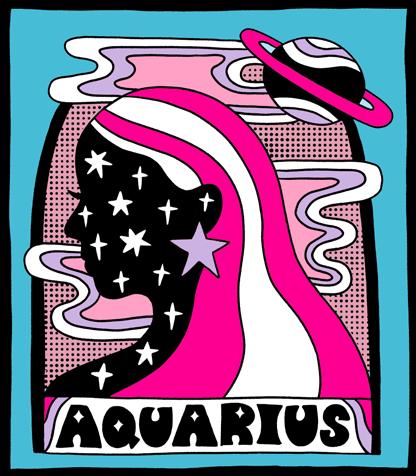

I’m sensing weird vibes in your flat… someone might be moving out, or there might be a disagreement about cleaning. Either way, it looks like it’s going to be better for your flat dynamic. Do: sauces, pottery class, and strap-on. Don’t: mint green, sudoku, and J names.
Intense emotions are inspiring you this week. You’ll get messages in weird cheese dreams and trap music— make sure to write them down, they’re important. This is the time for self care and reflection. Your internal work is starting to pay off. A breakthrough is on its way.
Cha ching! Your tax refund came in late, and you’re suddenly balling— this is the time to save!!! Your partner might ask you to make a decision. If you use your words, you’ll manifest what you want this week. And in that conflict with your flat, babes, you’re the one being unfair.
Time to put those half-baked plans back on the grill. This is the perfect time to go hermit mode, pop on some sick tunes, eat an edible, and brainstorm your debut novel. And on Wednesday, remember, no one gets it you like you do— DIY, it’s in your DNA.
People are starting to notice your skills, my friend. Whether it’s essay writing, underwater hockey, or tarot readings, you’re absolutely slaying the game. I know you’ve been feeling overwhelmed, things are looking up from this week on.
There’s an abundance of connection coming into your life. It’s giving opening up your relationship, or maybe meeting your platonic soulmate on a night out. Take the leap this week, it’s gonna pay off. And yes, block them first iykyk.


Time is on your side this week. I’m seeing you finding money on the ground and all your outfits coming together perfectly. Use a magic 8 ball to ask the universe for help this week, and you will receive. Beware your love and family life might have a crossover episode.
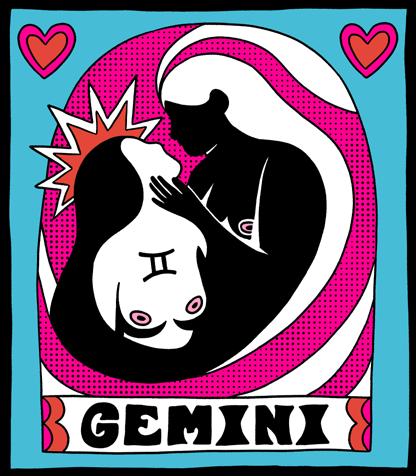
Quitting your Blue V addiction has paid off. I’m envisioning a full week of 9 hour sleeps and your therapist giving you a random discount. Renew your passport! The travel wizard has a trip in store for you, but only if you do the adult thing and put on your big boy pants!
The cock block on your creativity will finally vanish this week. You better put it to good use though otherwise this newfound mojo will leave nothing but bad juju in your life. Time to be the ultimate Boss Bitch Capricorn, you’re gonna have to take the lead on that group project.


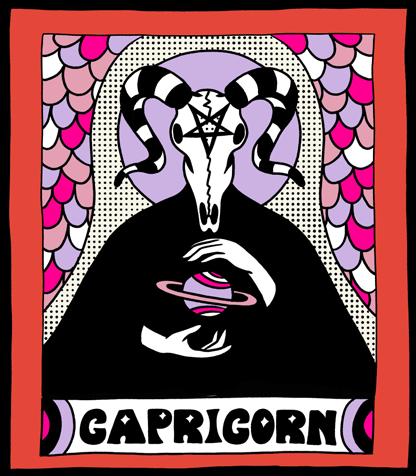
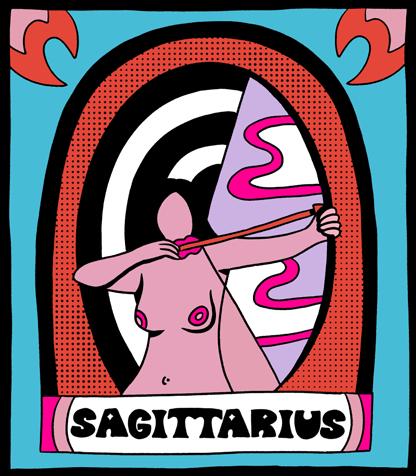
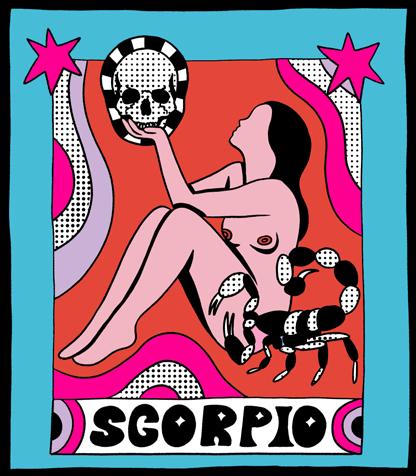


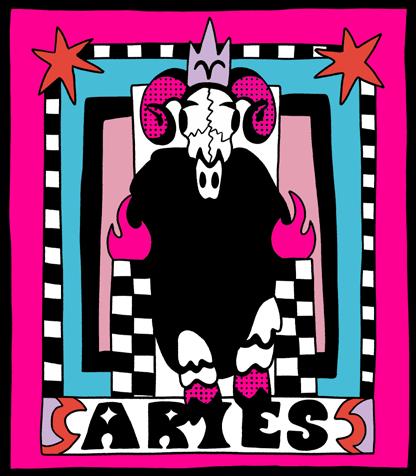
Your landlord just called me, you can have pets now. There's a glitch on your next paycheck, it’s your boss's fault, and it will be fixed within five working days—the money gods are on your side. Also, yes, live out your Ken dreams and rock that double denim.
I’ve decided, Garage sale at your flat! It’s time to Marie Kondo your life, this is your minimalism era. You are a communication god this week. If you've been putting off a tricky convo now is the time! Your inner critic is too stunned to speak!
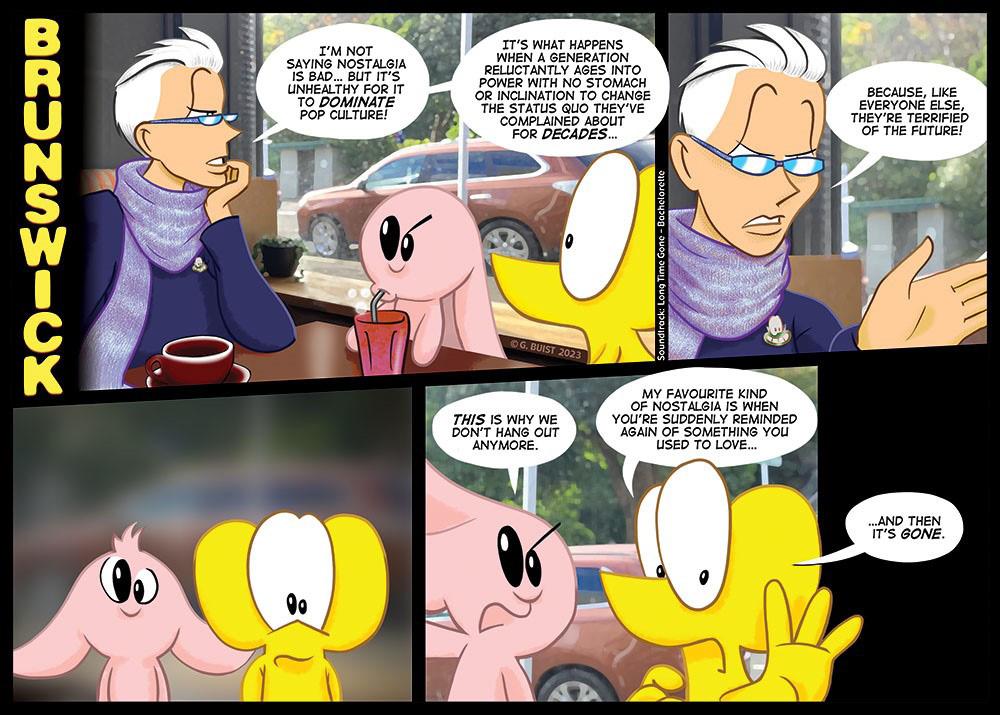



1. Shoe brand famous for their ‘All Stars’ (8)*
5. Ball of thread used for knitting (4)*
9. Surname of Joe, Taylor Swift’s ex (5)
10. Small round dumpling-like pasta, commonly made with potato (7)
11. Horse’s gait that is slower than a canter (4)
12. Ball game played with long-handled sticks with nets (8)
14. Start over (5)
15. Capital city of South Korea (5)
18. Given name of actor Ford known for Star Wars and Indiana Jones (8)
19. What the D in CD stands for (4)
21. What is written on the front of an envelope (7)*
22. Poem made up of three lines with 5, 7 and 5 syllables respectively (5)
23. Filed a lawsuit (4)
24. Lines spoken between characters in a show or play (8)*
1. What one’s teeth may do when it’s cold (7)*
2. Physics demonstration with swinging spheres that bounce off one another when pulled away and released, a common office toy (7,6)
3. Given name of The Incredibles’ character Mode, superhero suit designer (4)
4. Word that can follow ‘TV’, ‘radio’, ‘traffic’ or ‘train’ (6)
6. Putting on jewellery or hats, for example (13)
7. Innocent, easily misled (5)
8. One who is on holiday in a place (7)
13. Pattern of parallel lines (7)
16. University class held in a theatre; where I hope you aren’t doing this crossword right now? (7)*
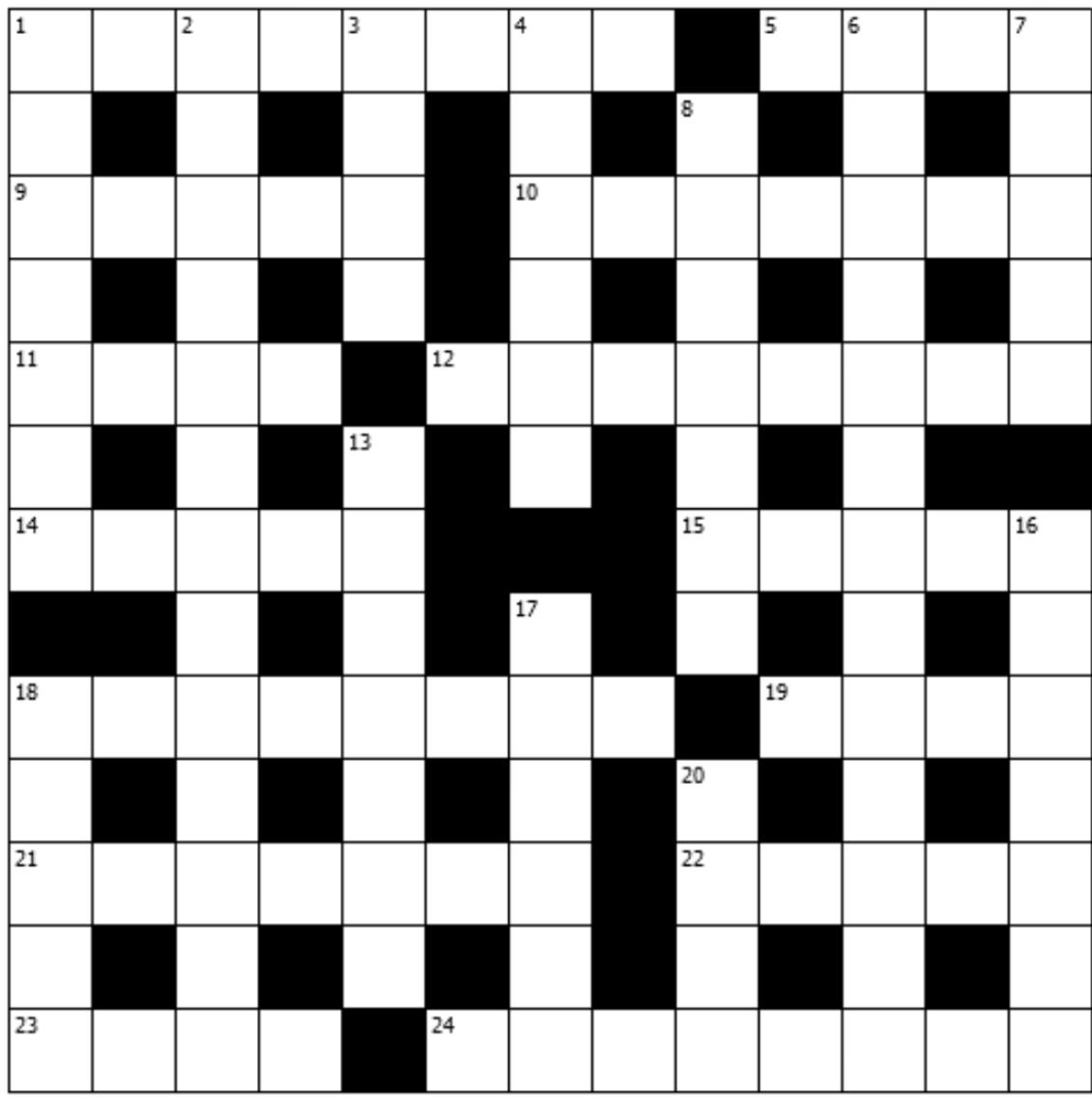
17. Art of growing and training trees in a pot (6)
18. Slang for lots; piles of something (5)
20. Given name of American TV personality Dr known for his ranch (4)

CO-EDITOR
CO-EDITOR
DESIGNER
PODCAST
PODCAST
NEWS EDITOR
CHIEF REPORTER
SUB-EDITOR
POETRY EDITOR

EDITORIAL SUPPORT
STAFF WRITER
STAFF
STAFF WRITER



Cassia Percival-Day (she/her)

Te Huihui o Matariki Chí Huy Tran (he/him)





Jaime Elliott (she/they)

Jamie Clumpus


Grant Buist (he/him)
Wes Brooke-White (he/him) Teddi (he/she/they)
Ella Hoogerbrug (she/her)






Bianca Maria Schioler (she/her) Blake (cross/word)

NEWS
WRITING
Christoph
